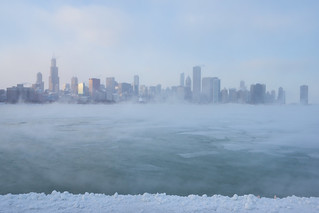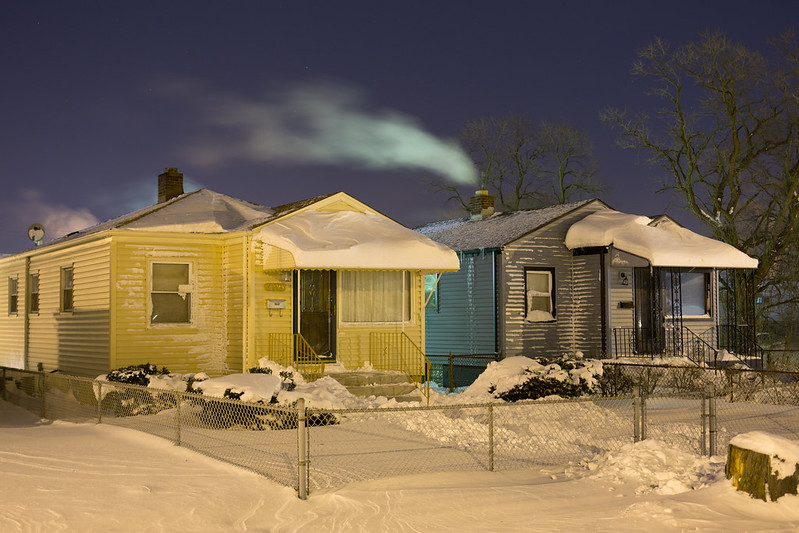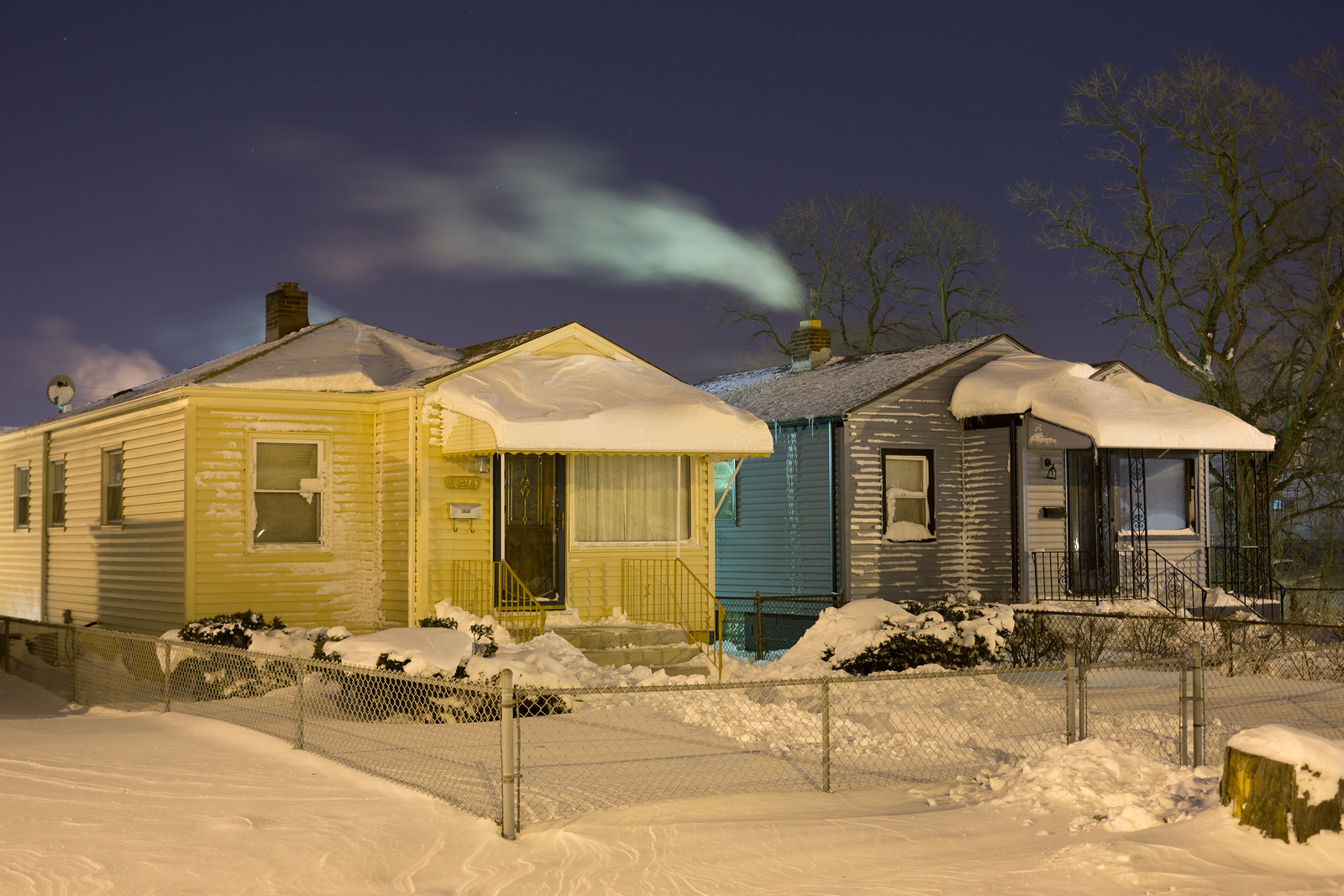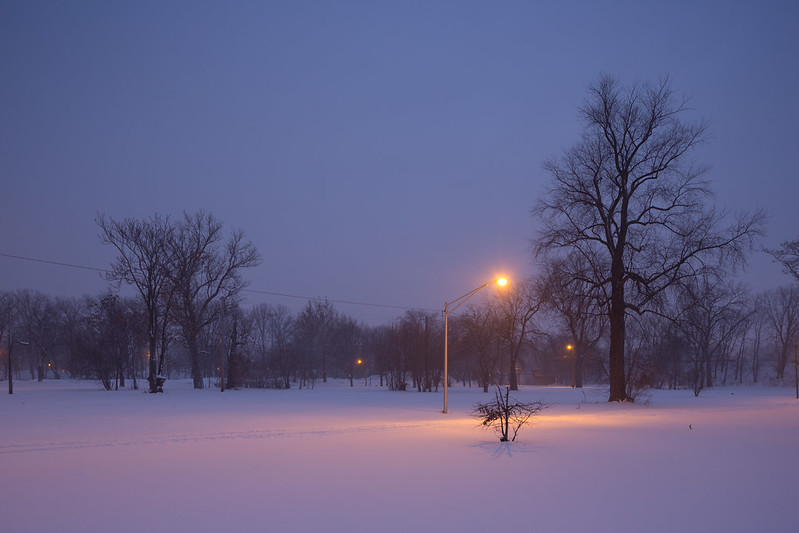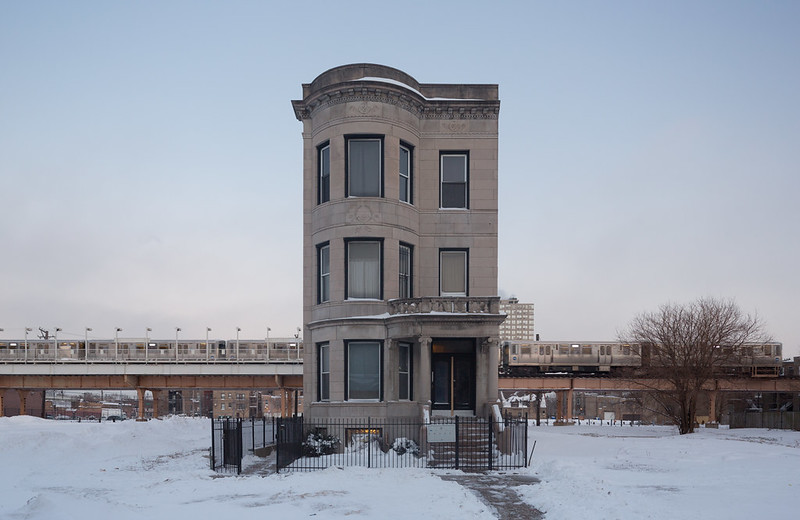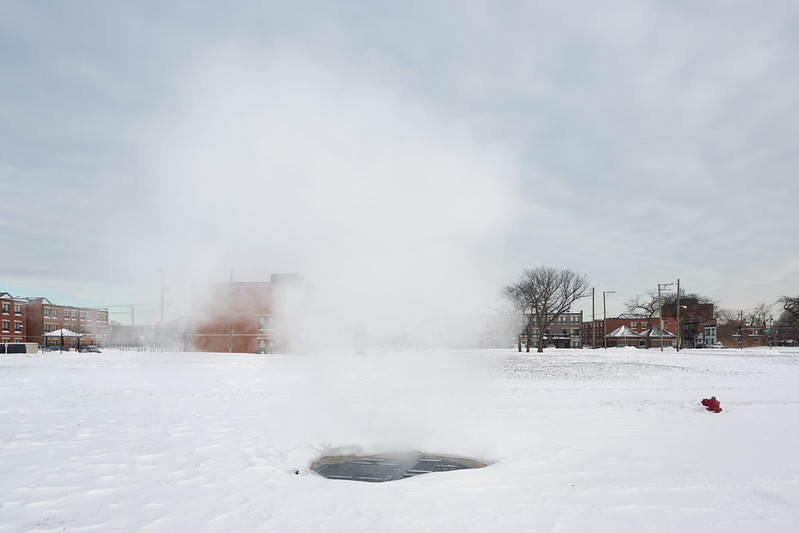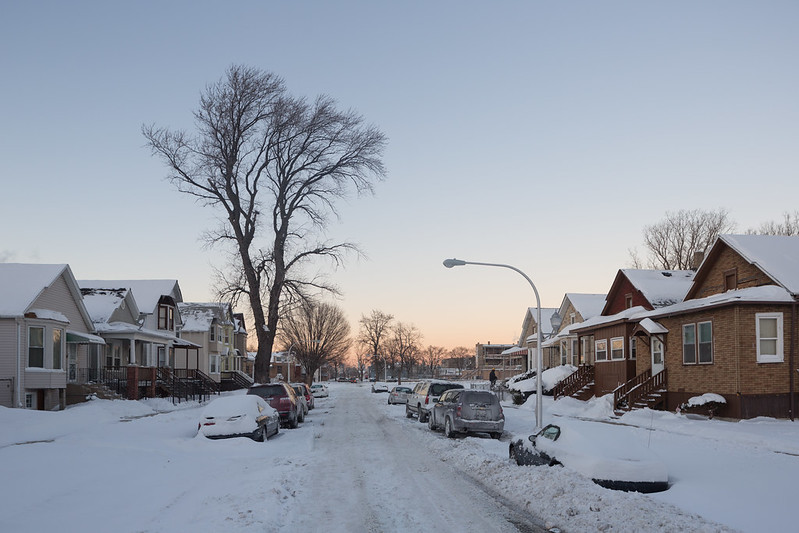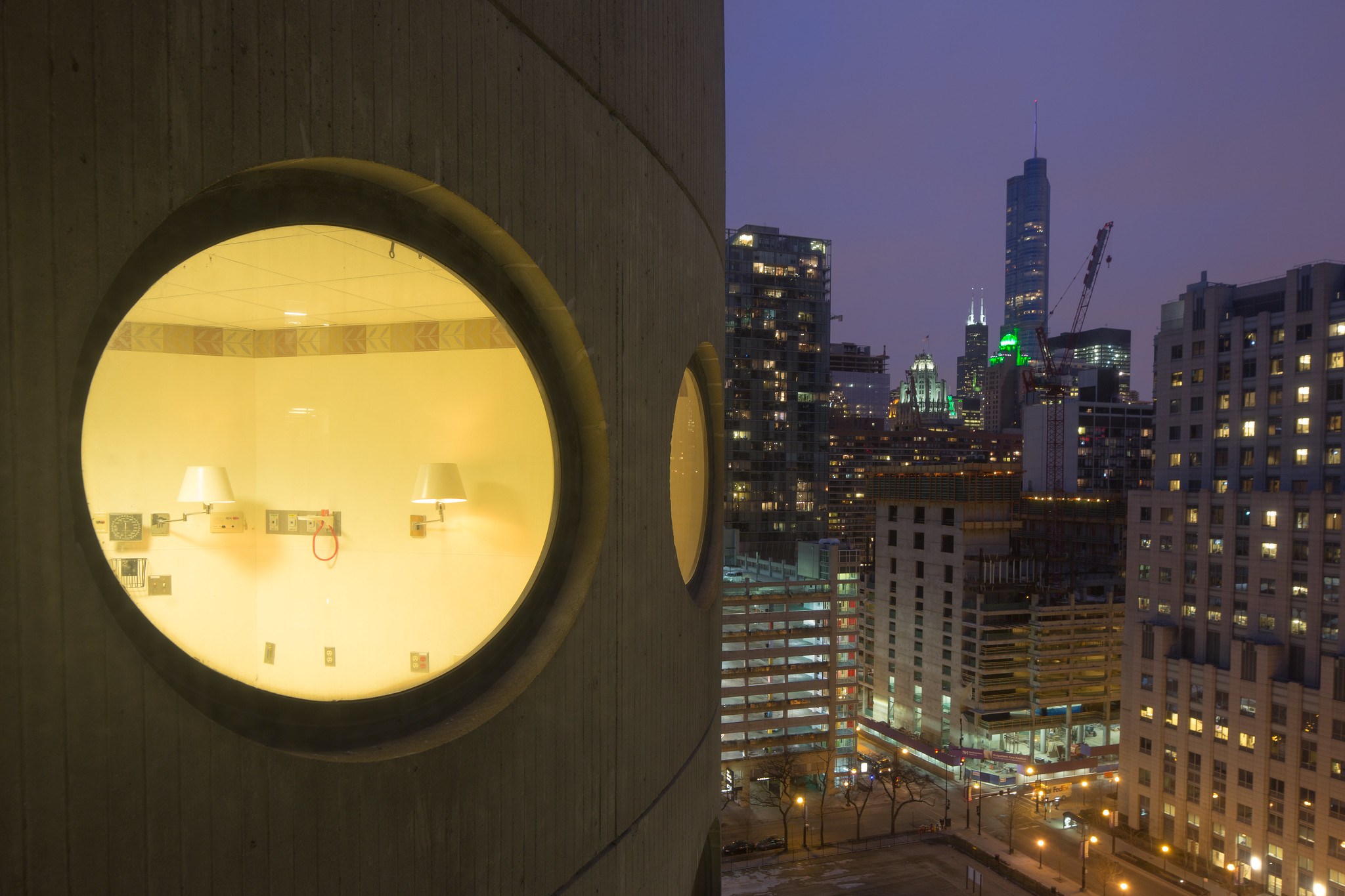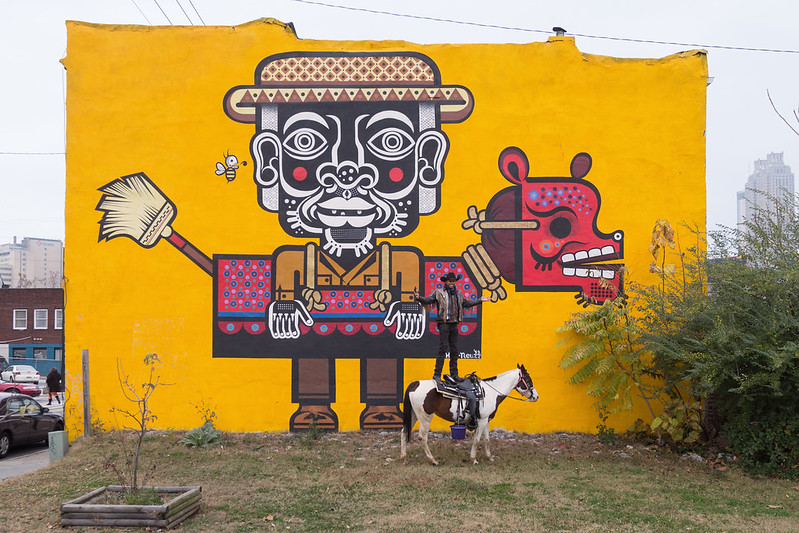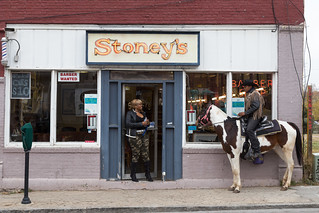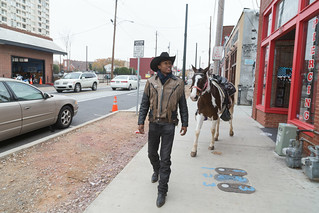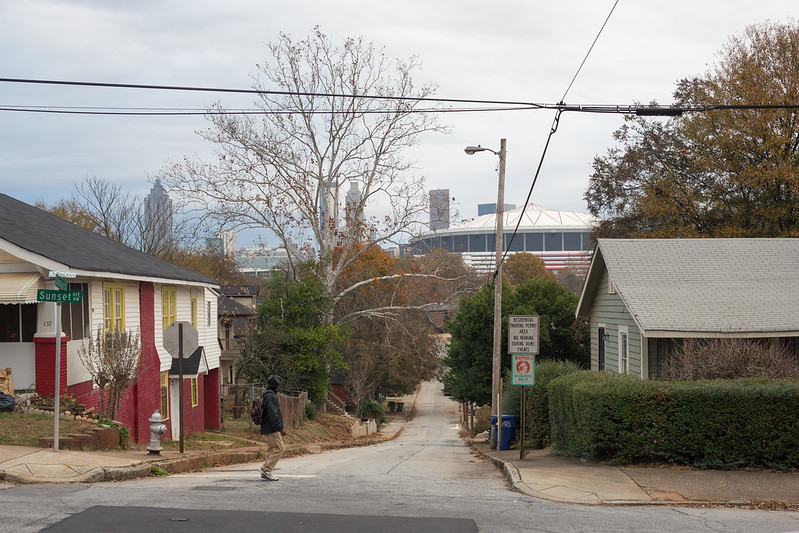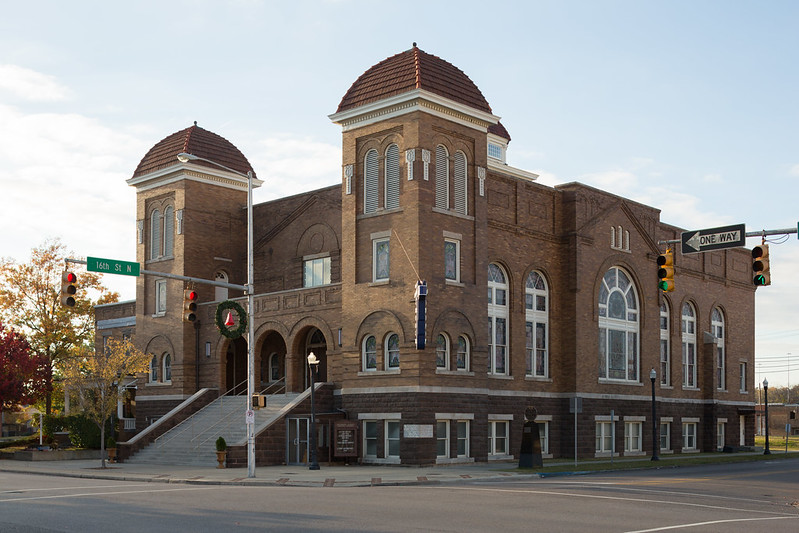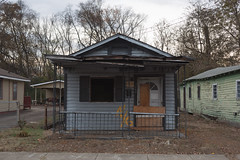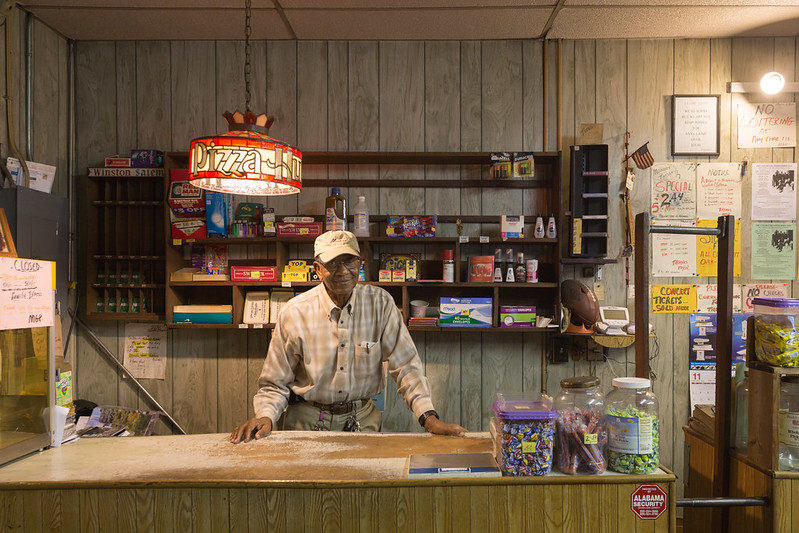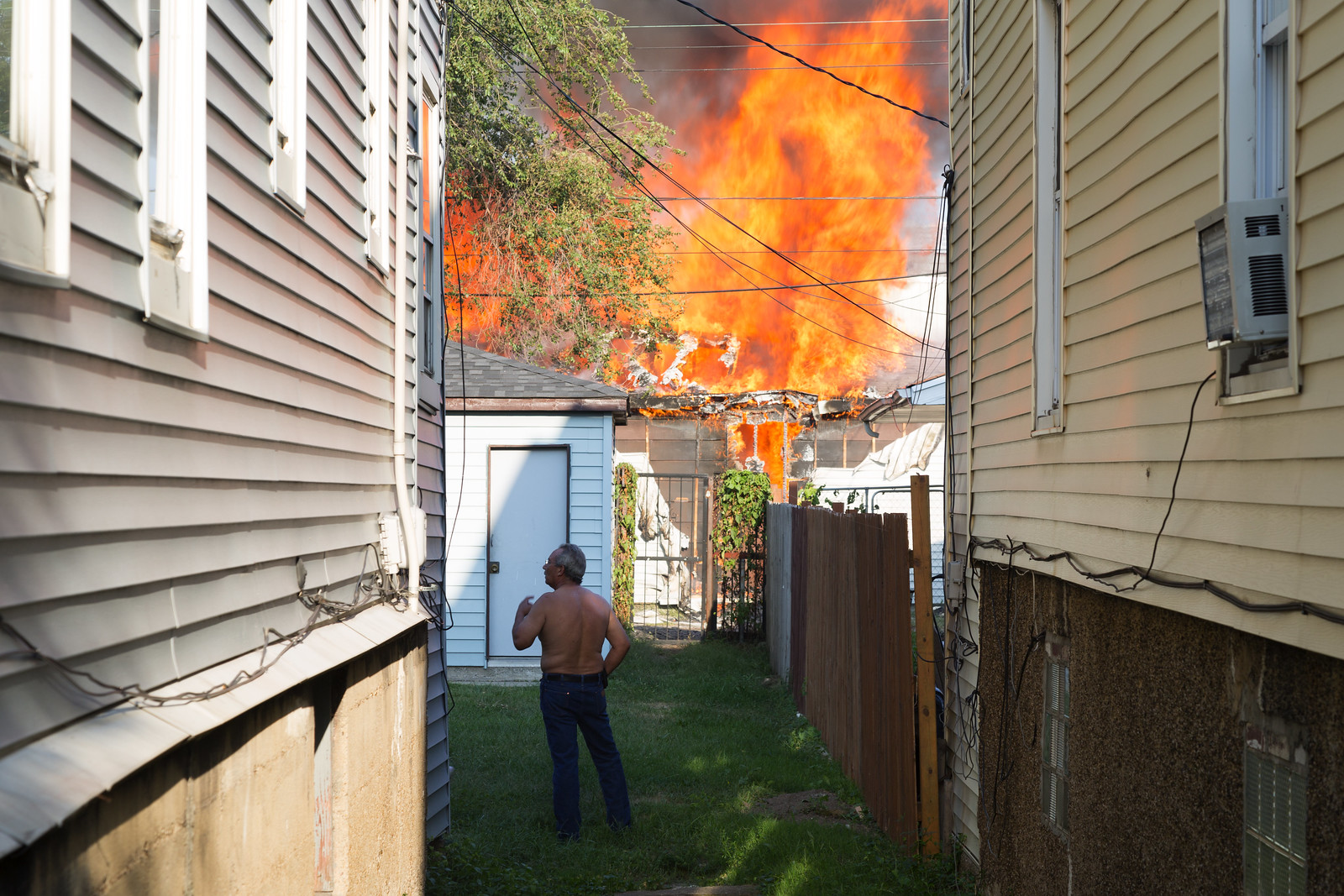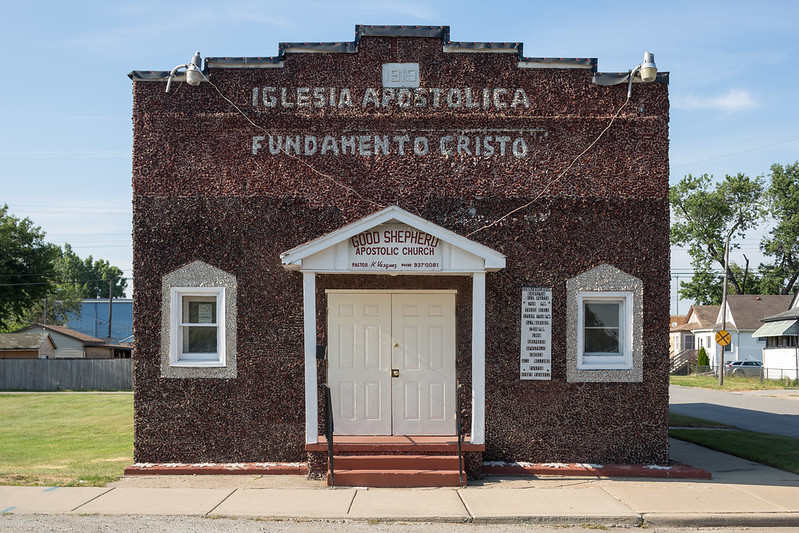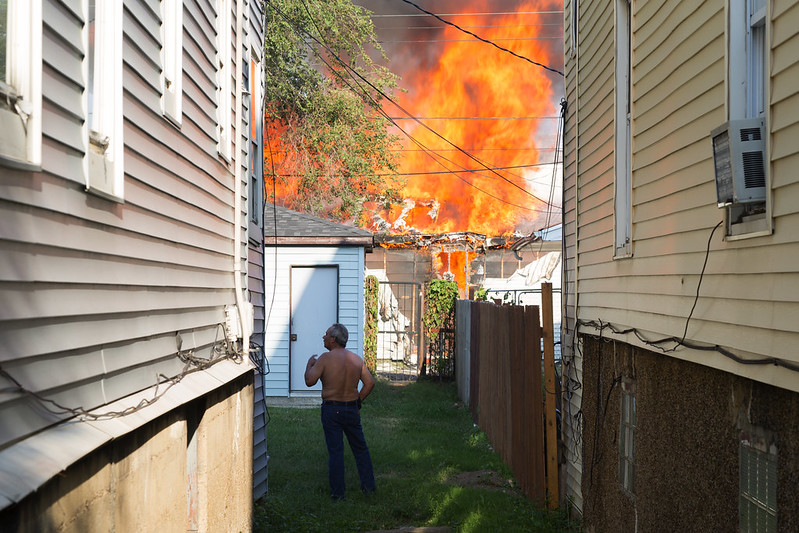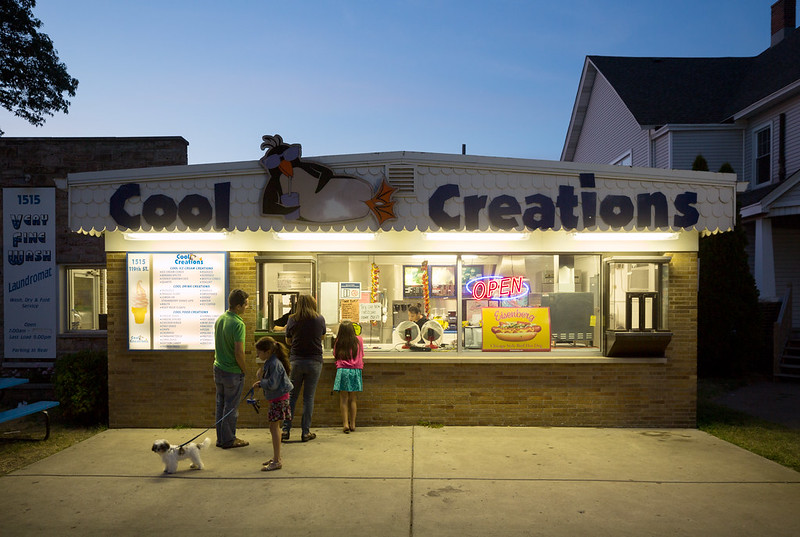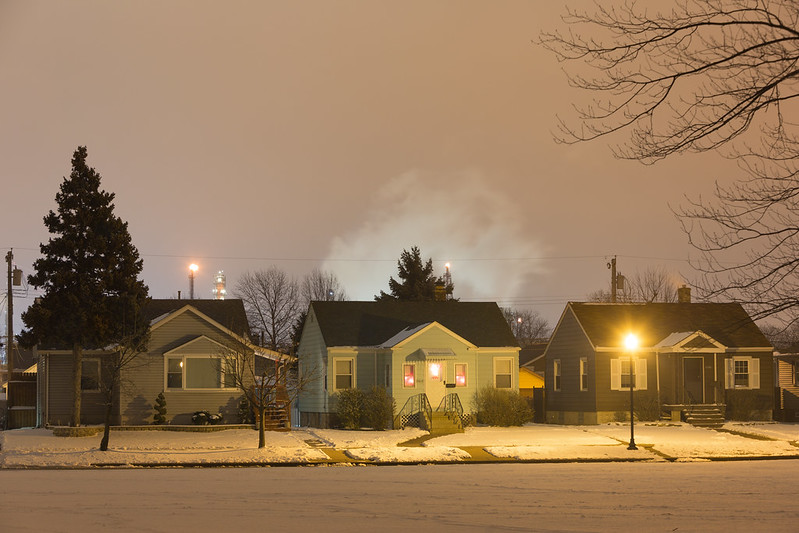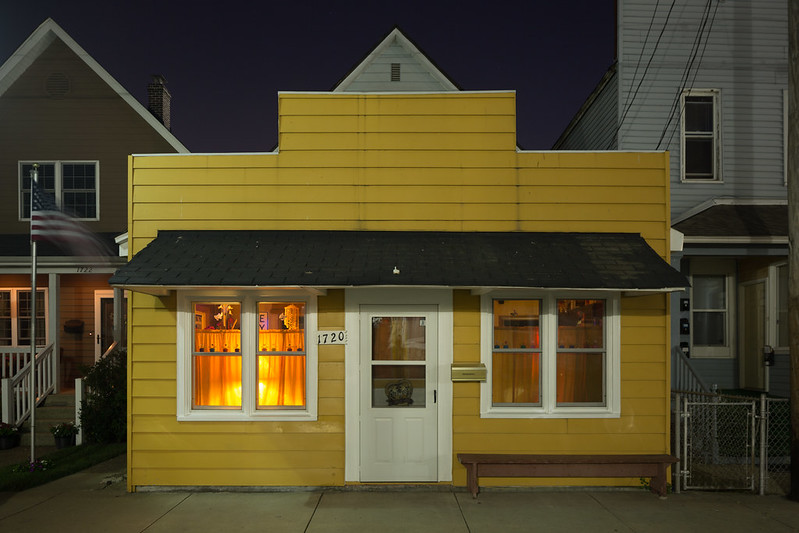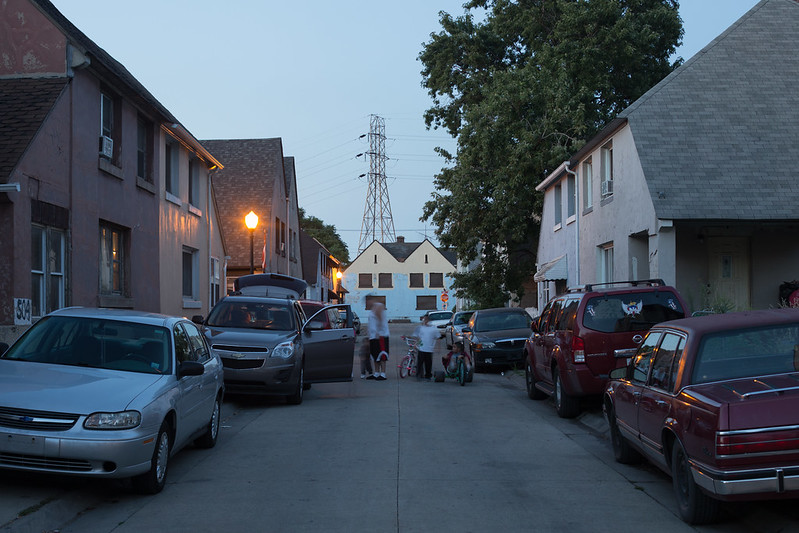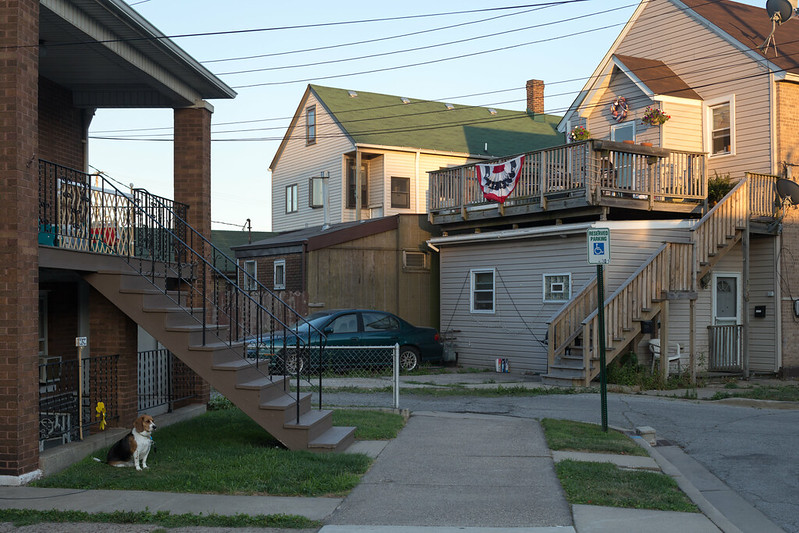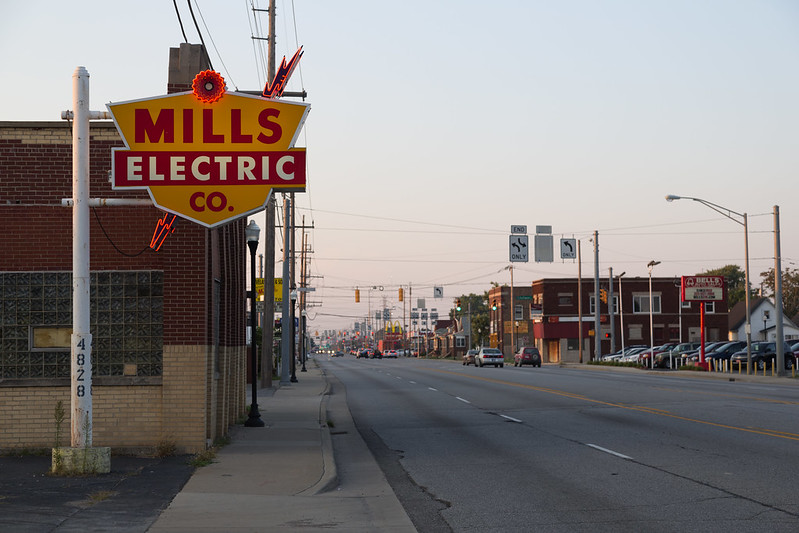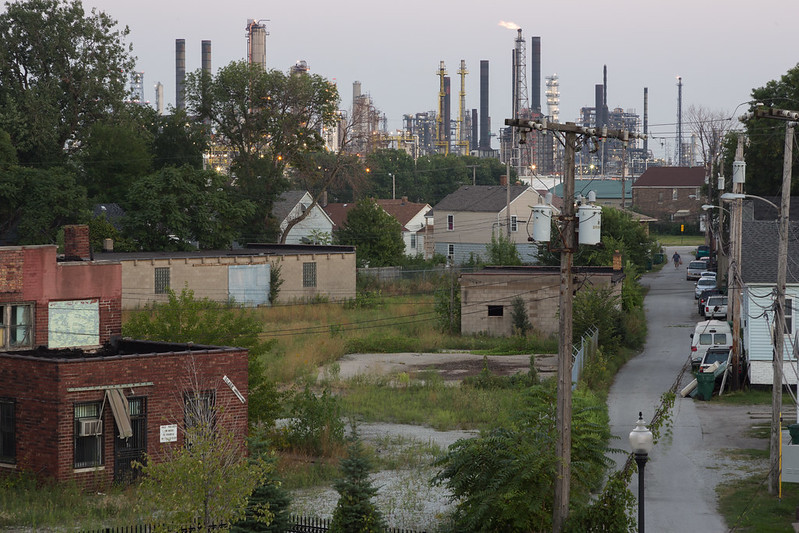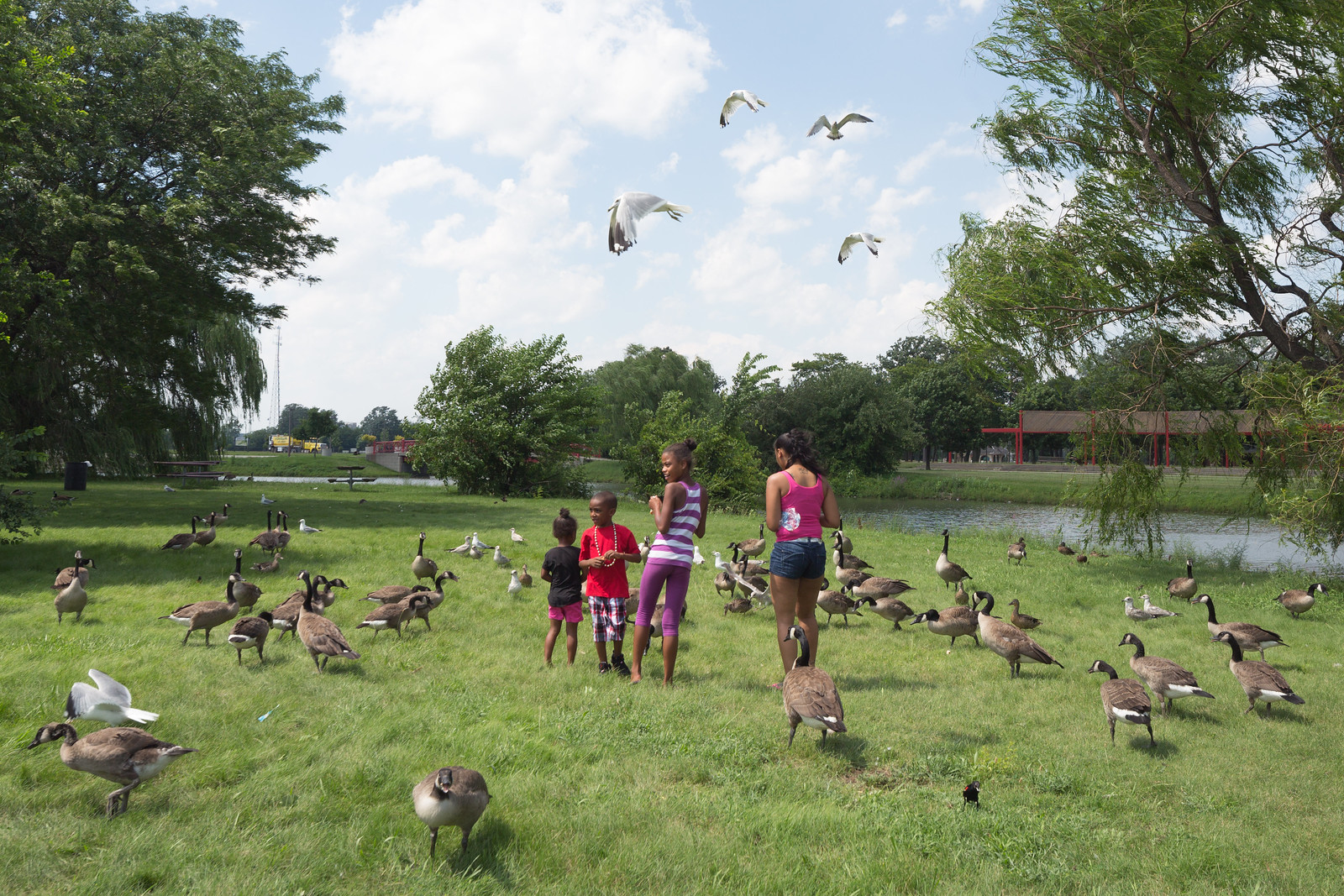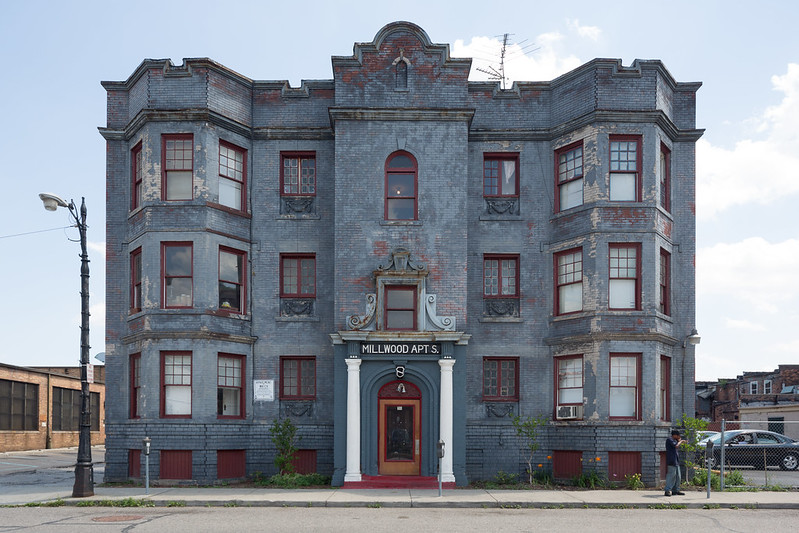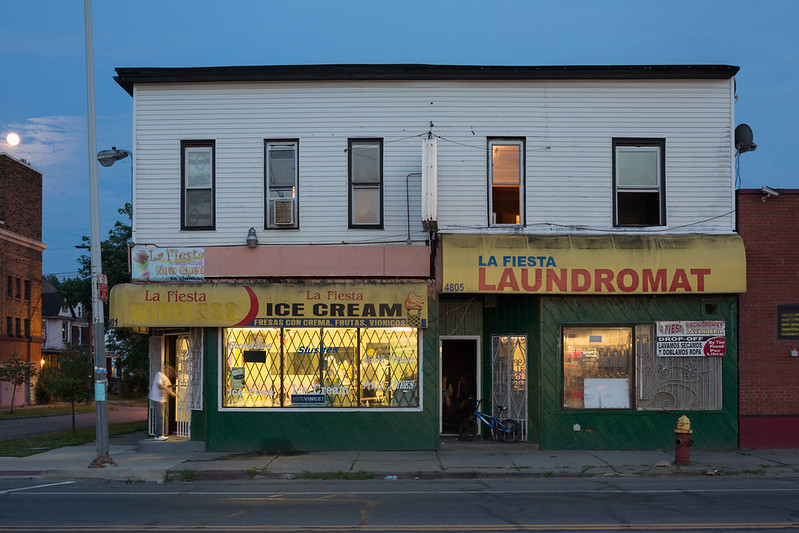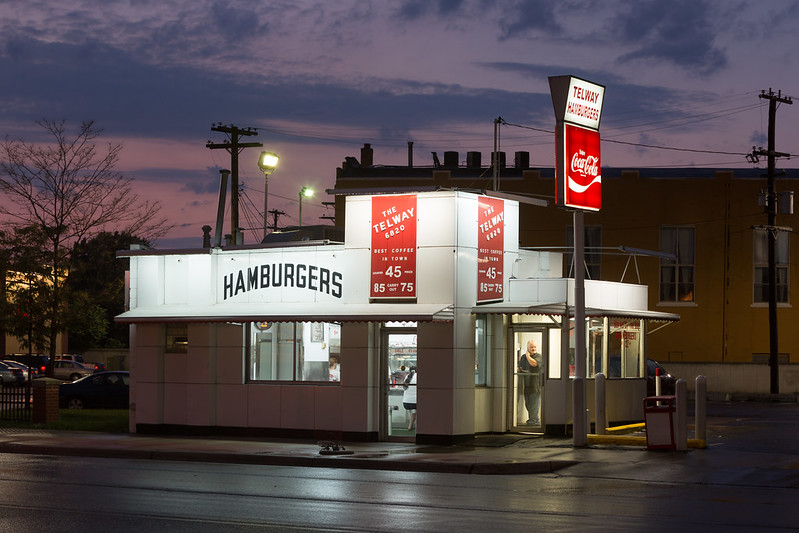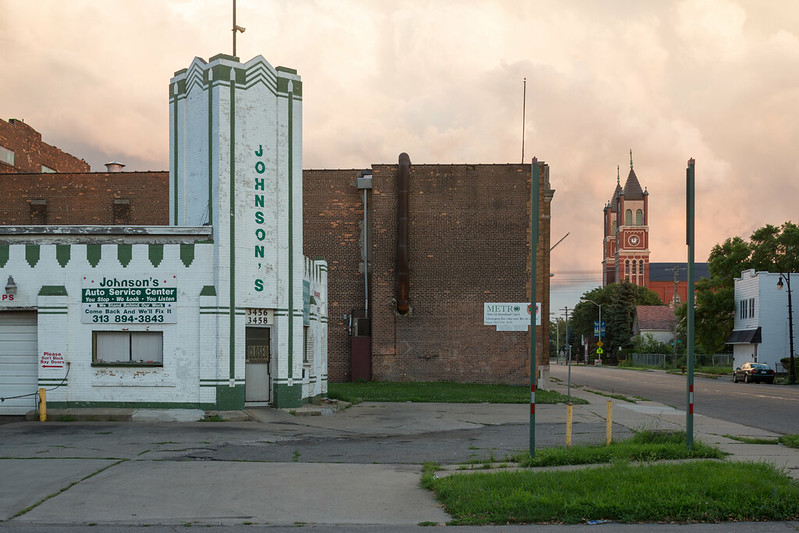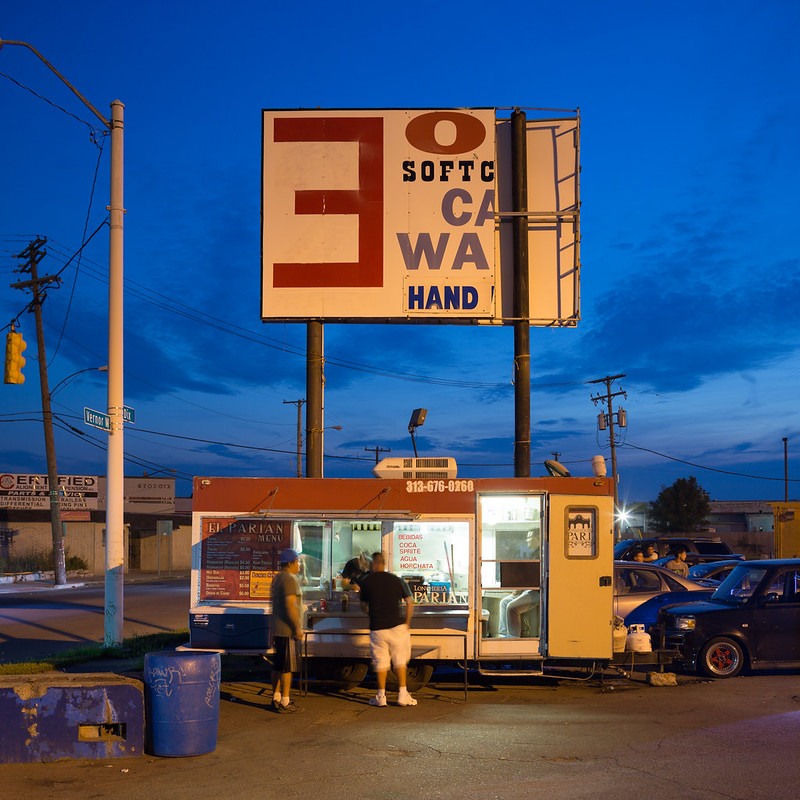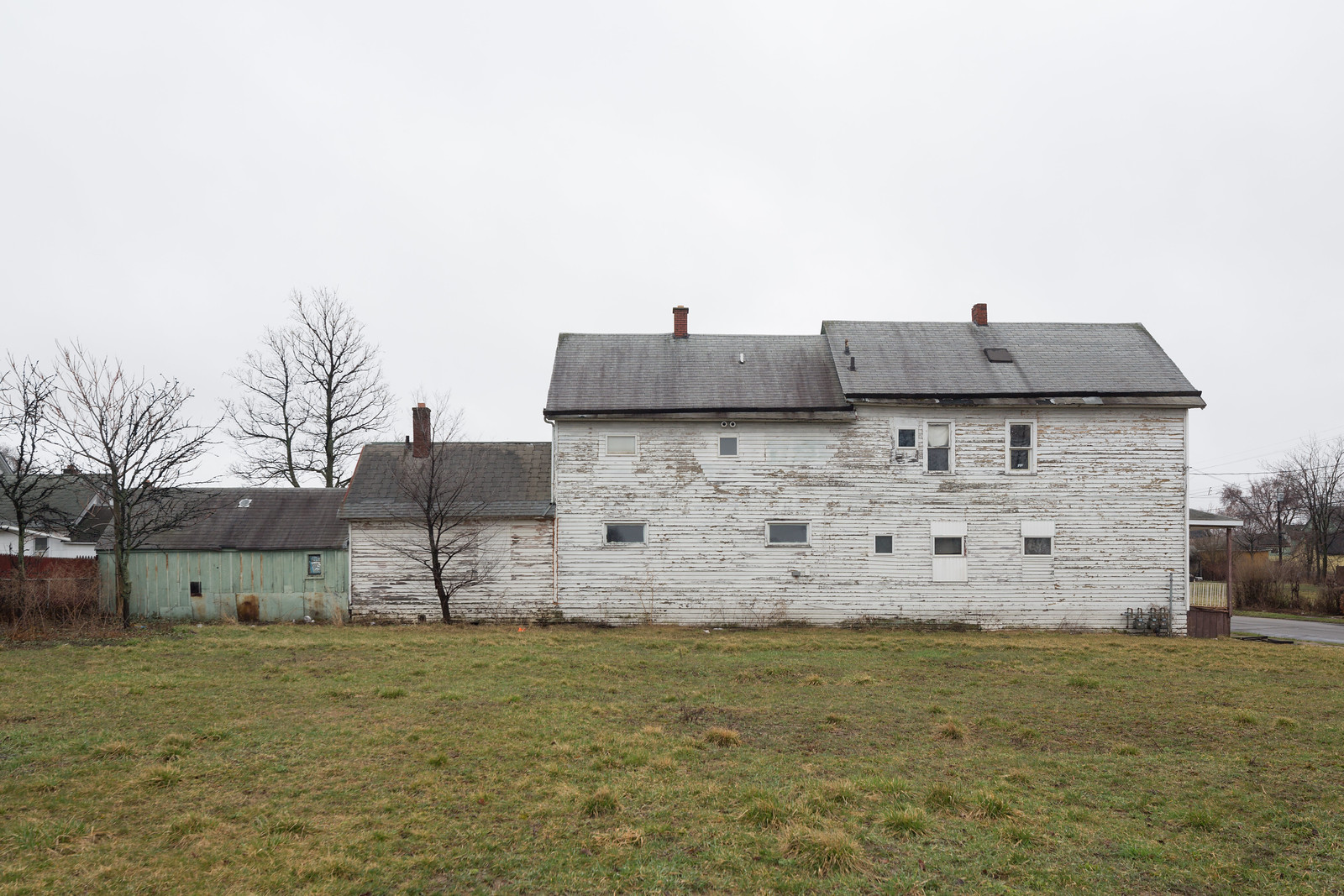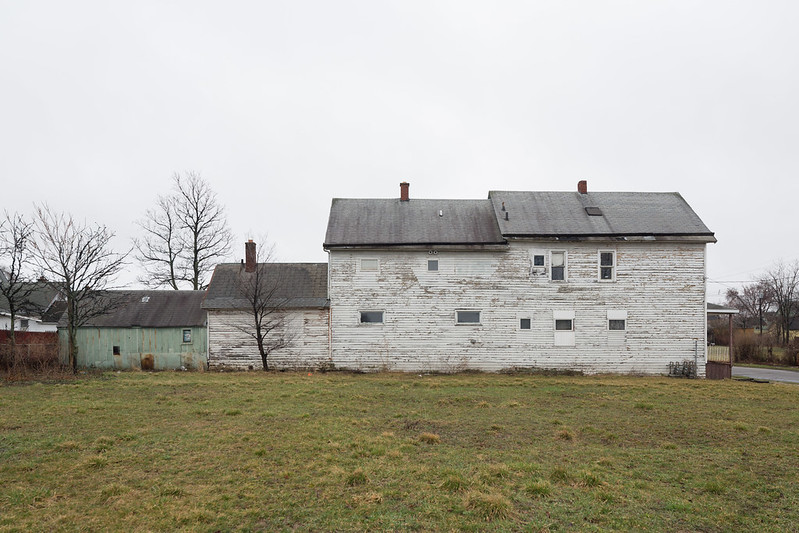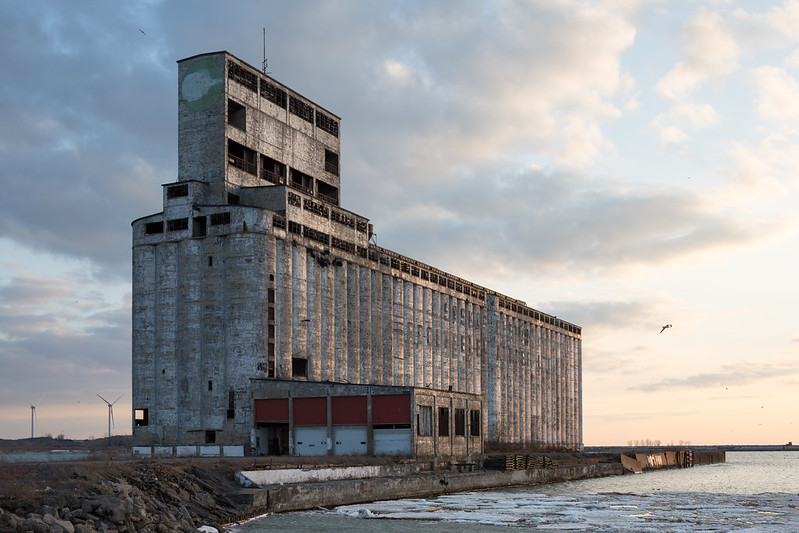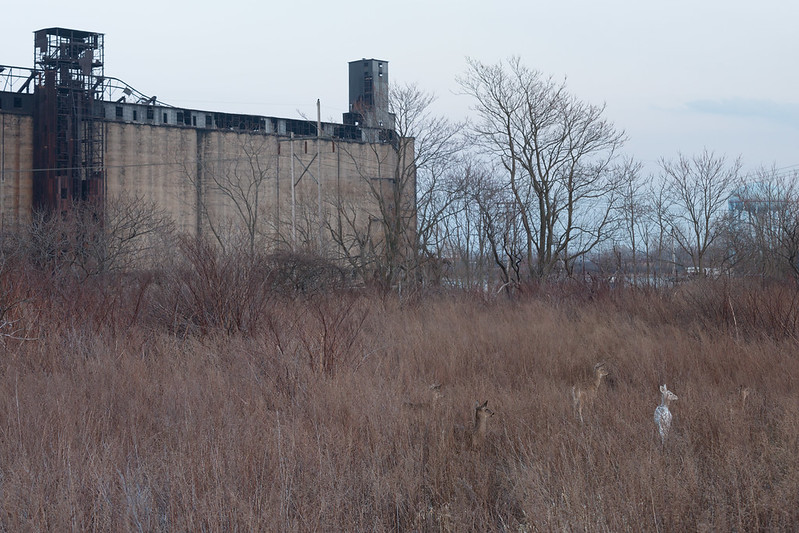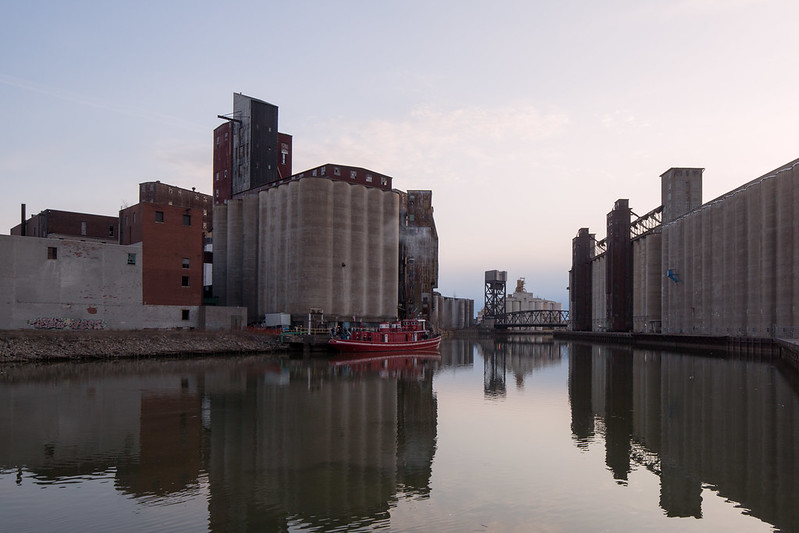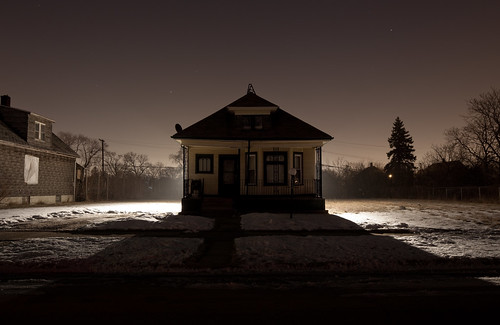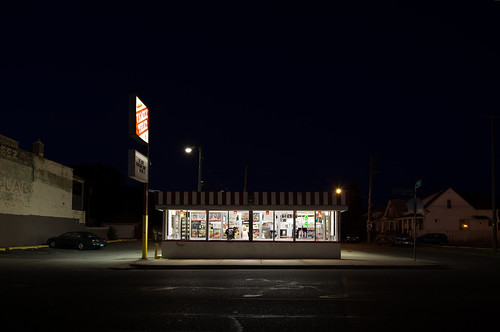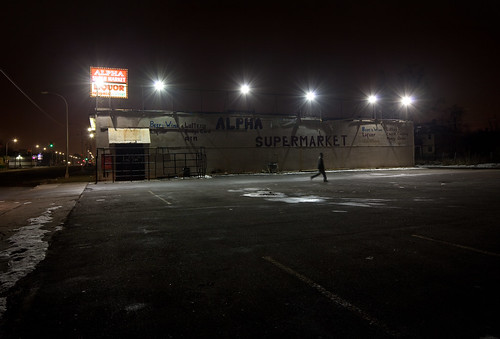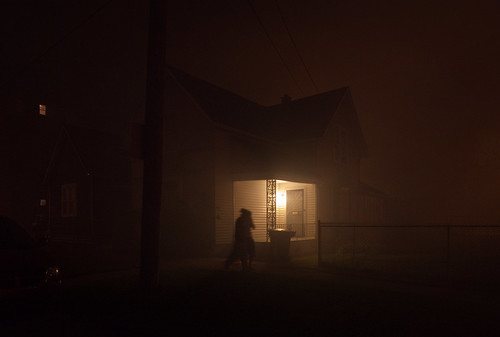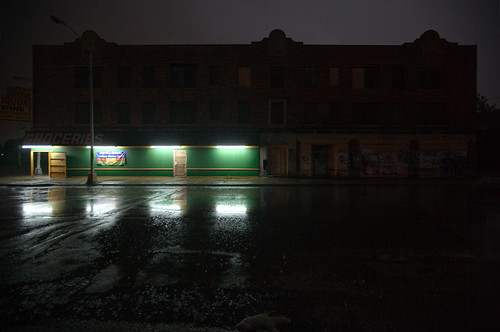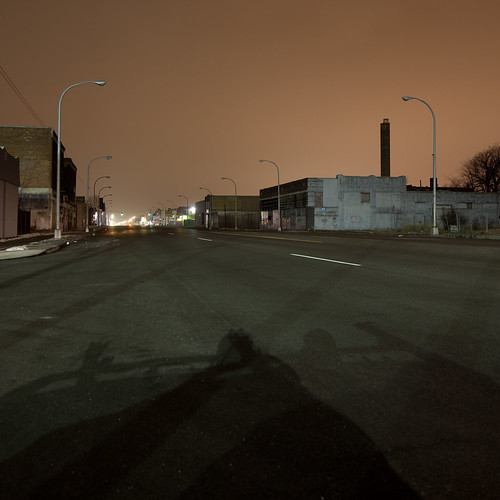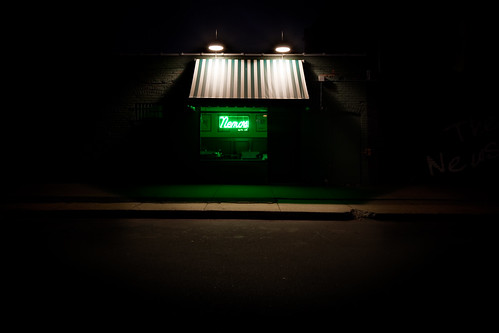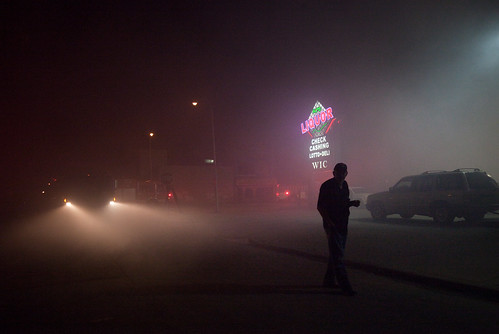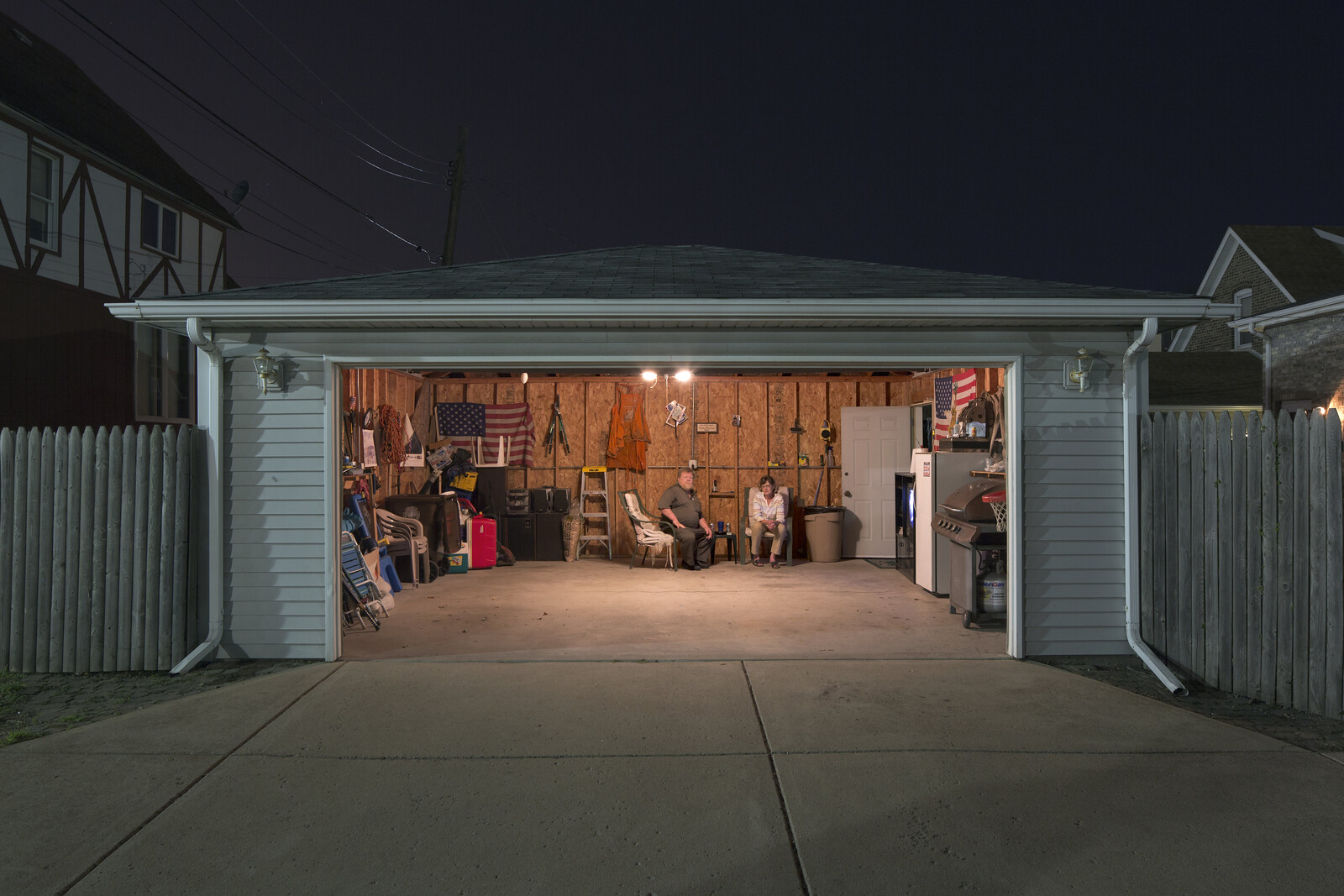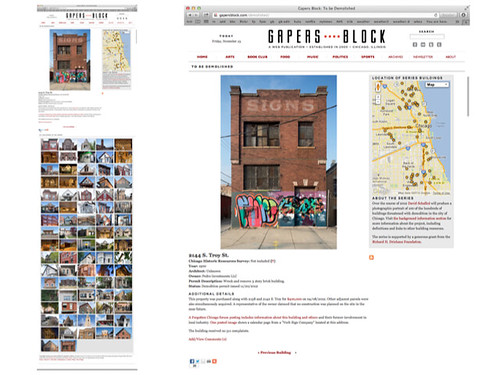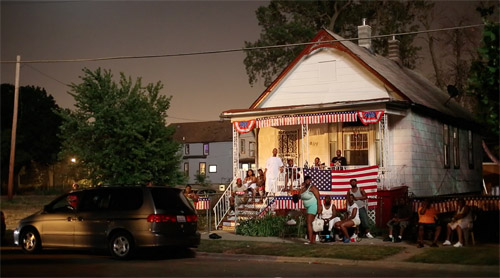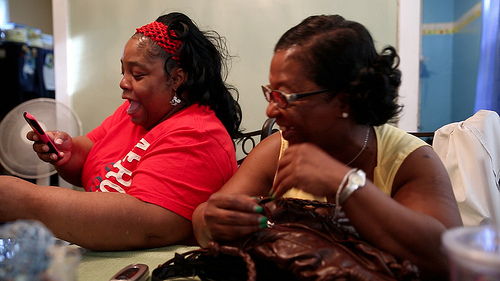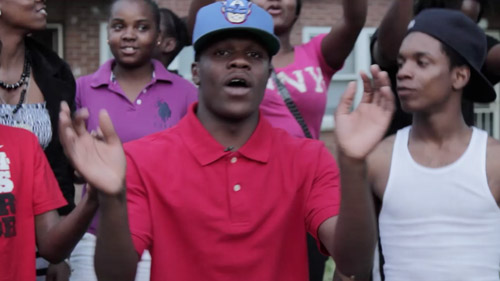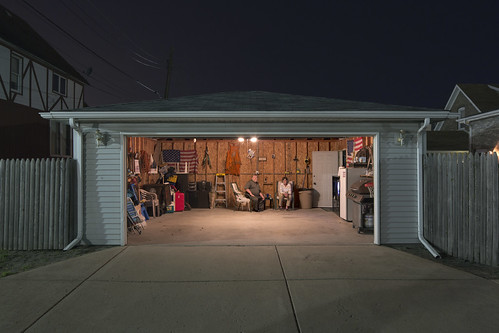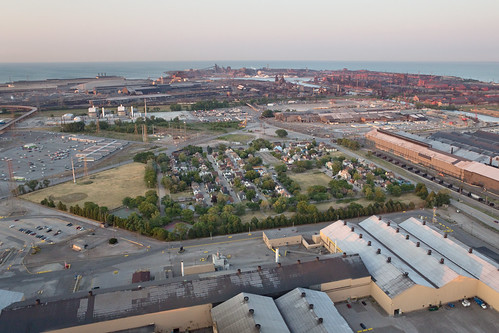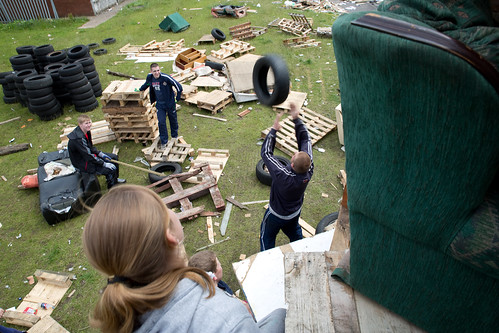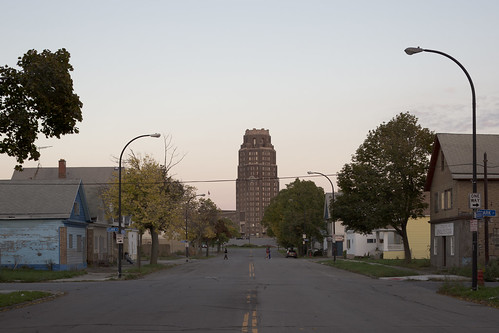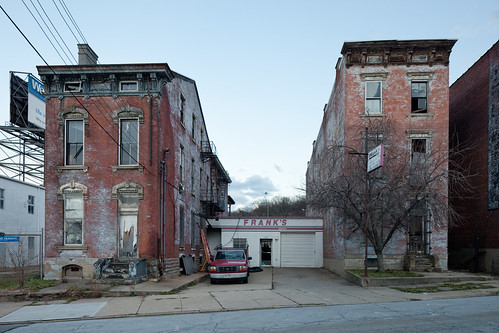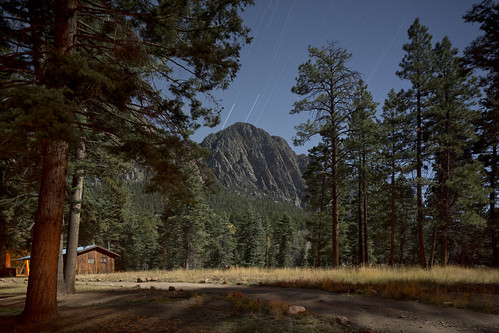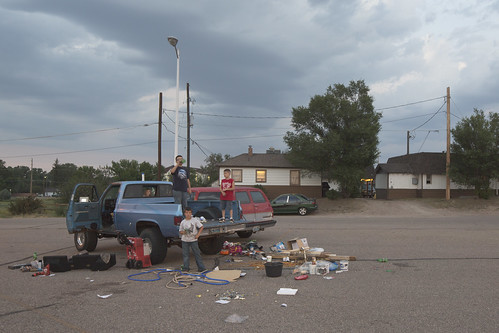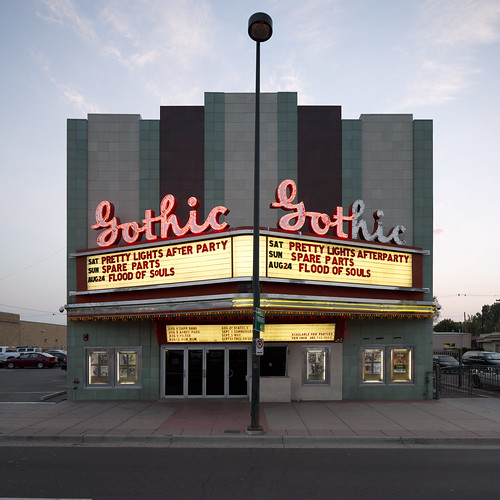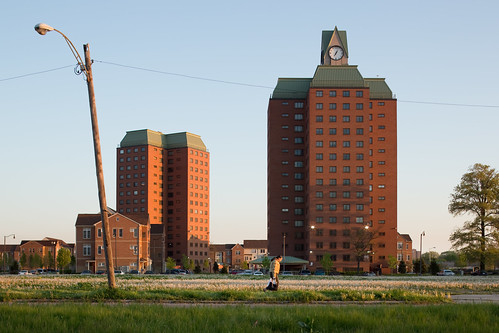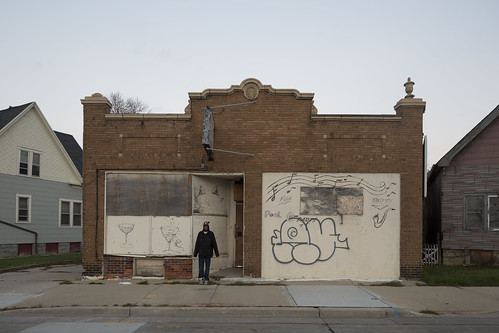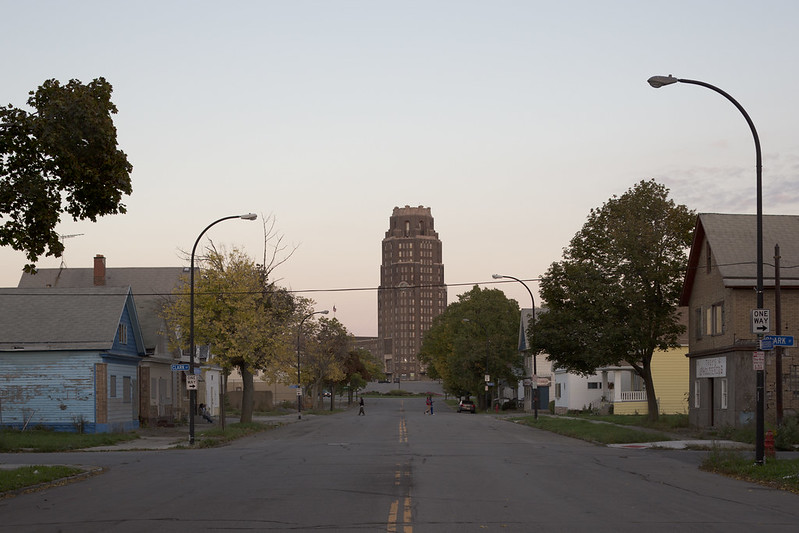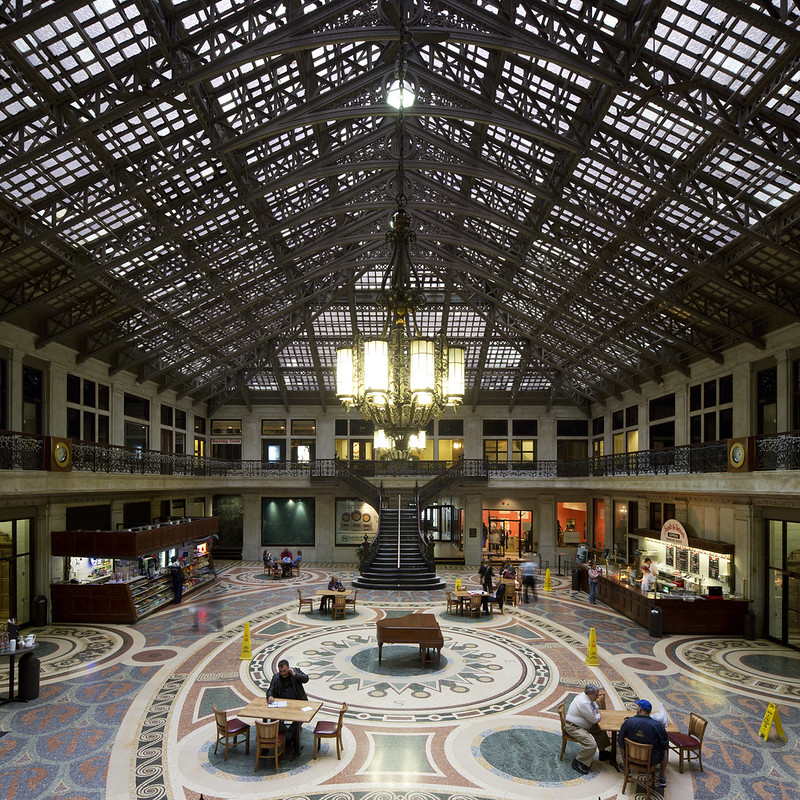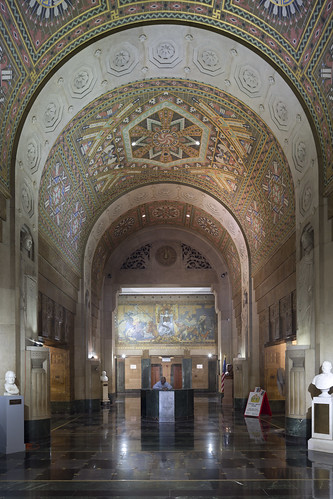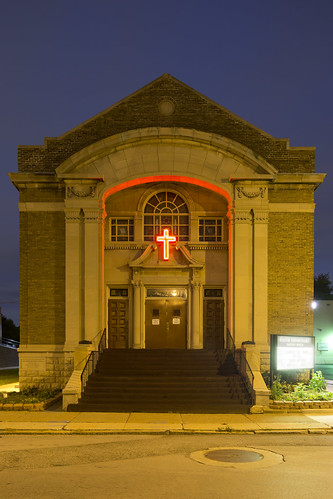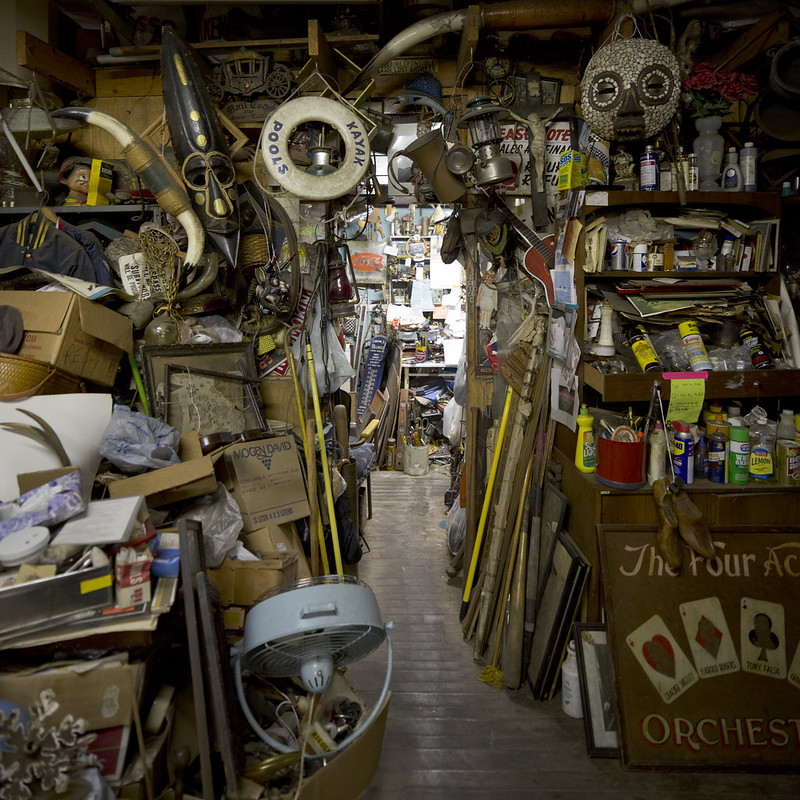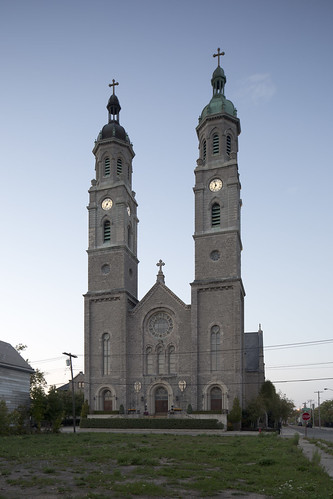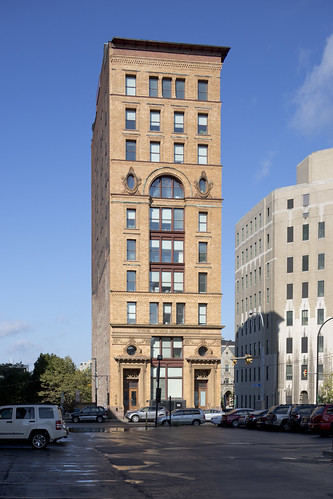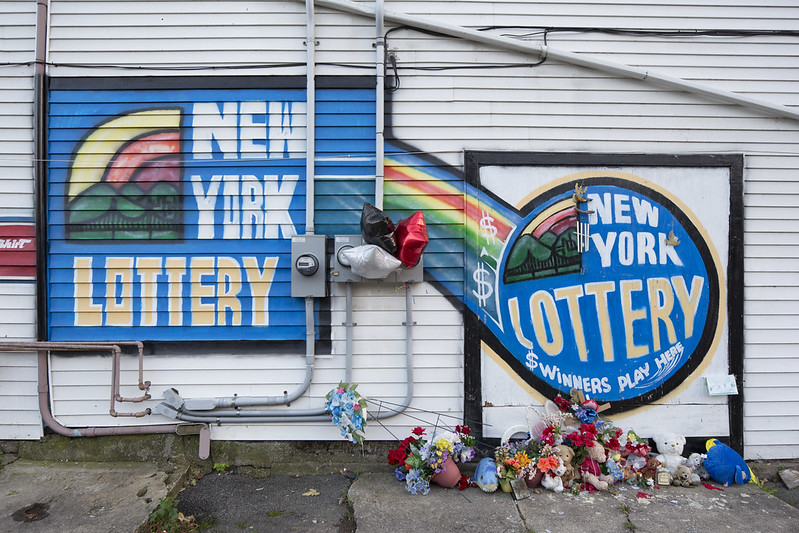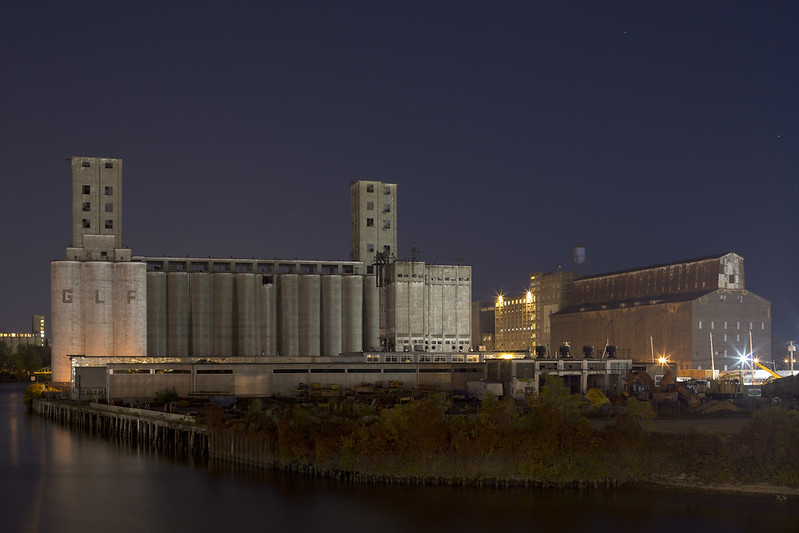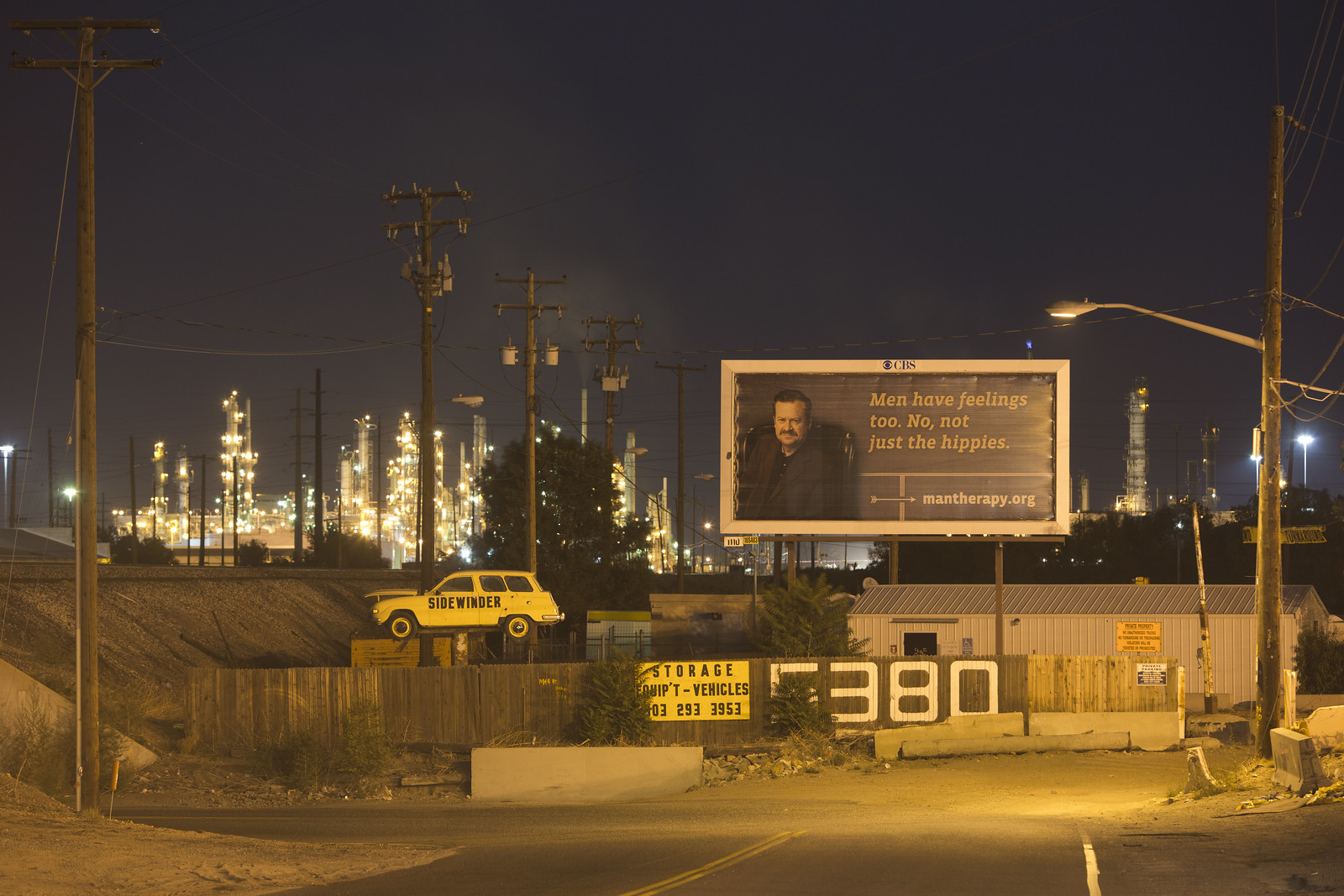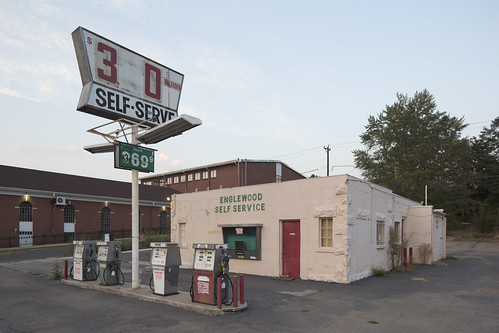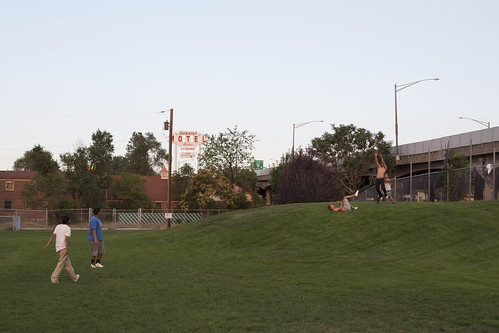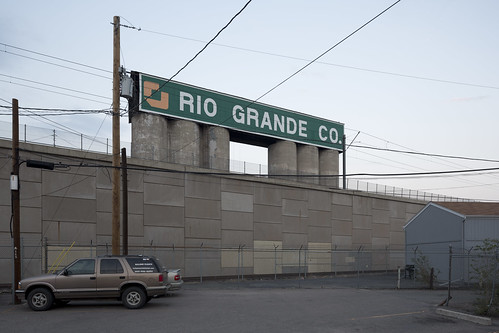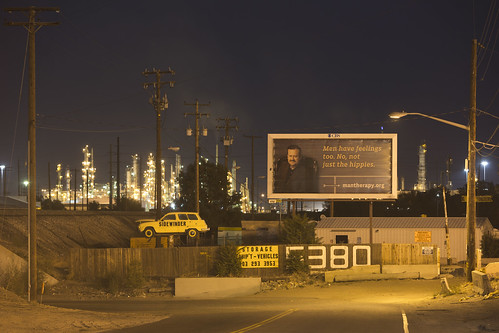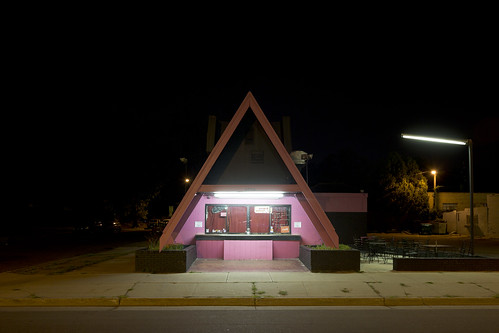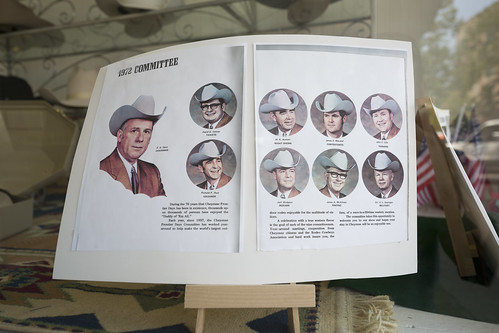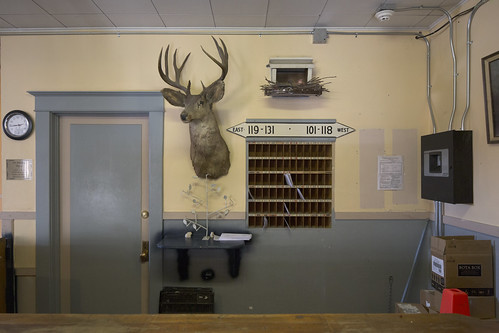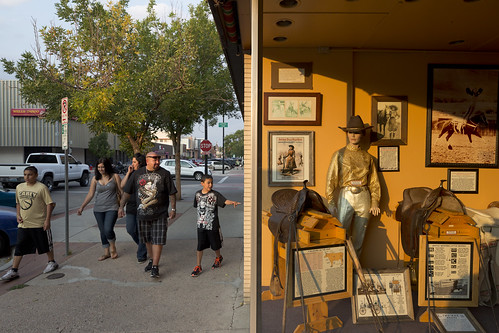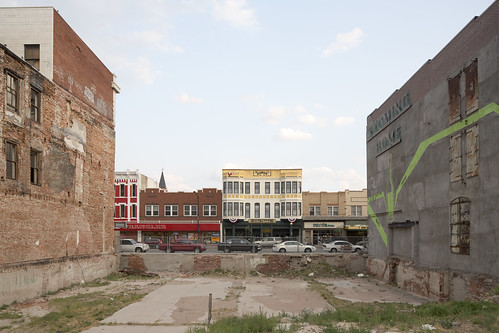2013 was yet another year of big changes: I finished my fieldwork for my dissertation; I started regularly spending time in both Chicago and Cambridge, Massachusetts; and I started a major shift in the balance of my photographic and video work.
In previous years, I pursued a relatively equal combination of project and non-project work. Typically, that’s meant spending as much time developing formal projects as more loosely exploring a given city. This year, I have been so busy with the formal projects that I have had much less time to “just” explore.
I worked on the documentary film (still tentatively called “The Area”) more than any other project, although I even shifted that balance. I was visiting the neighborhood nearly every day for the first half of the year, but I am now visiting in concentrated chunks. I dedicated much of the time I would have spent in the neighborhood to either writing about the project or initiating post-production work with Scrappers Film Group. If you would like to read some of my writing about the project, I have been authoring a column about the work for BagNewsOriginals. If you haven’t seen the documentary short from the project, you can view it on Gapers Block.
Of the other projects, two of my favorites were documenting Bertrand Goldberg‘s Prentice Women’s Hospital and contributing to the Kartemquin Film’s Almost There. While Prentice’s magnificent exterior presented the usual opportunities and difficulties involved with documenting buildings, the interior documentation was particularly challenging. By the time our team was allowed access to the building, Northwestern University had already begun some elements of the demolition, and the many of the floors lacked electricity for anything other than emergency lighting. Still, the experience was unforgettable, and I am happy with the work we produced. Hopefully the next building will be saved.
I’ve included example photographs from those projects below, along with selected images from my visits to other U.S. cities. You can click through for larger versions of the images on flickr (except for the Prentice images) and can click on the titles to see other blog posts or flickr sets.
The Area
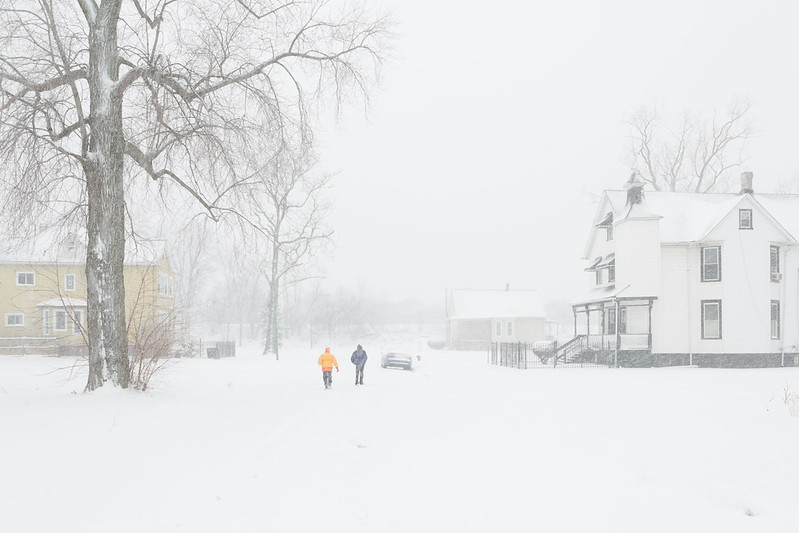
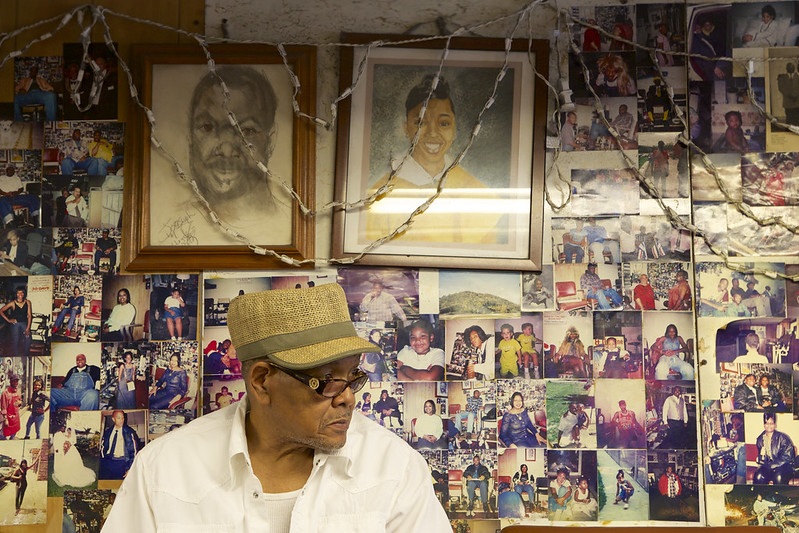
Prentice Women’s Hospital
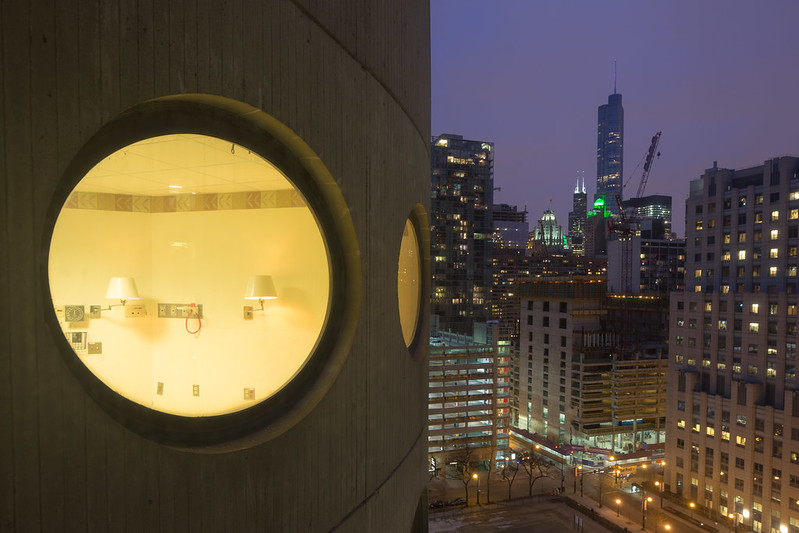
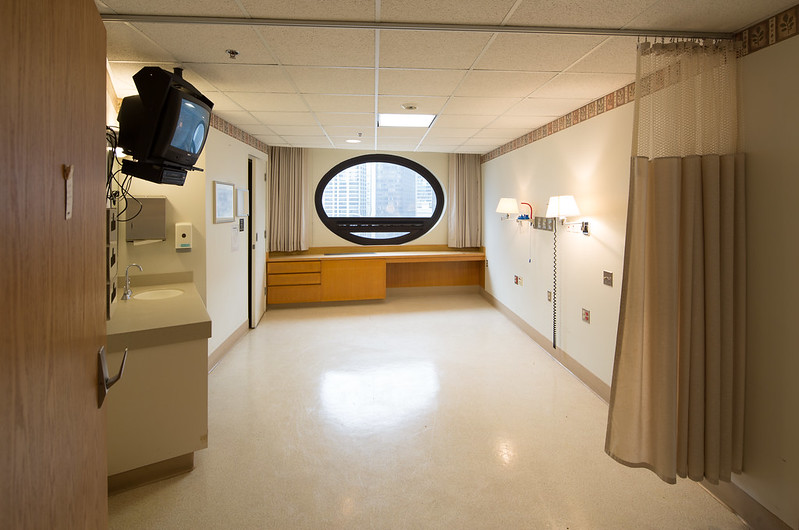
The following is a short advocacy video we made for the National Trust for Historic Preservation about Prentice.
Almost There in Northwestern Indiana
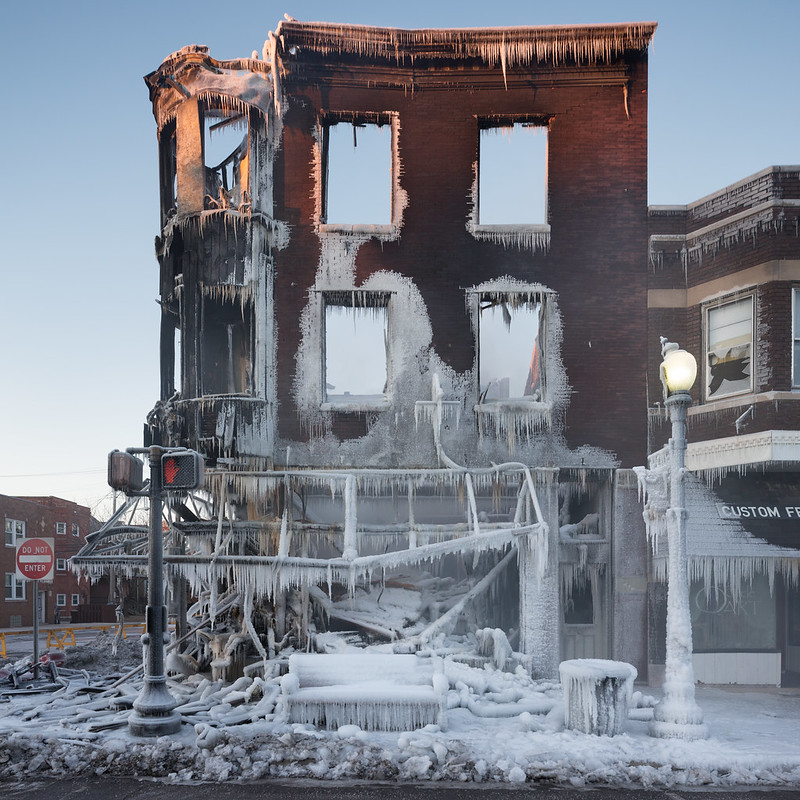
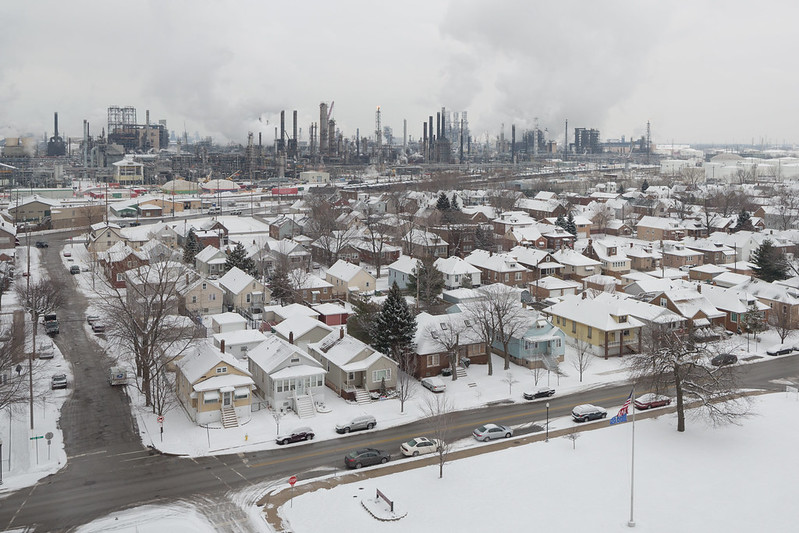
Atlanta, Georgia
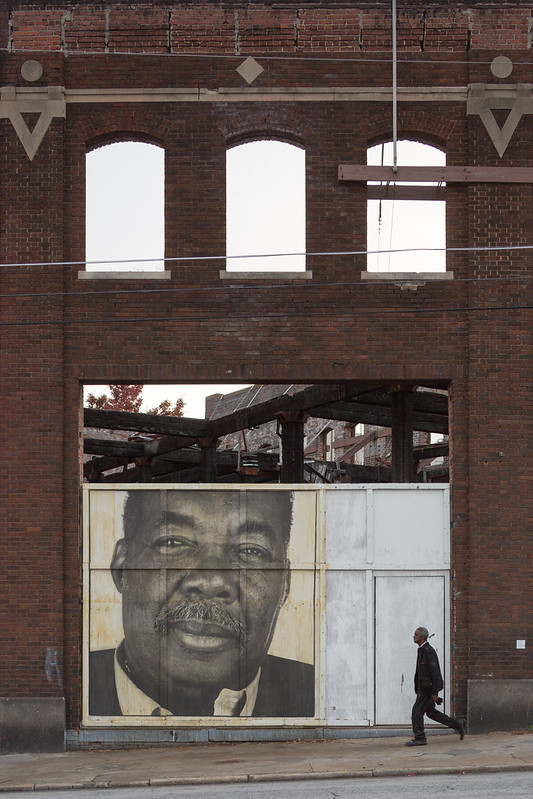
Wheatpasted photograph of Johnny E. Parham, Jr., participant in the Atlanta Student Movement from Sheila Pree Bright’s
Project 1960.
Birmingham, Alabama
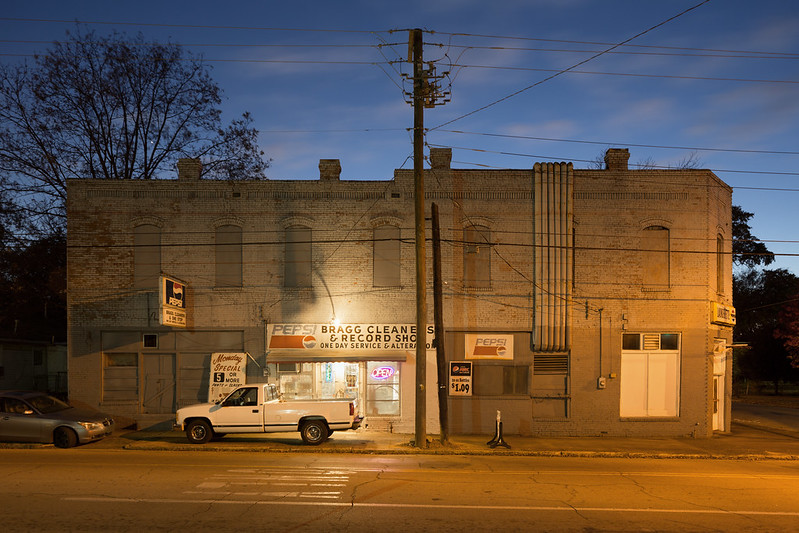
Boston, Massachusetts [f]
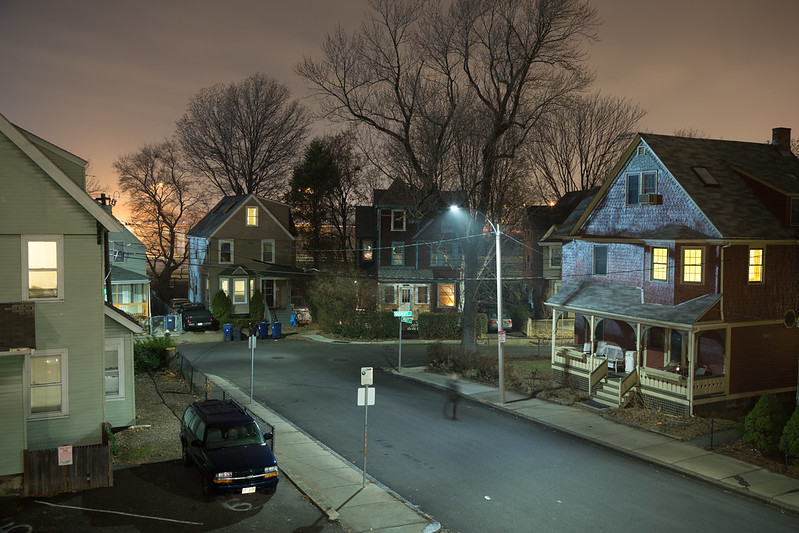
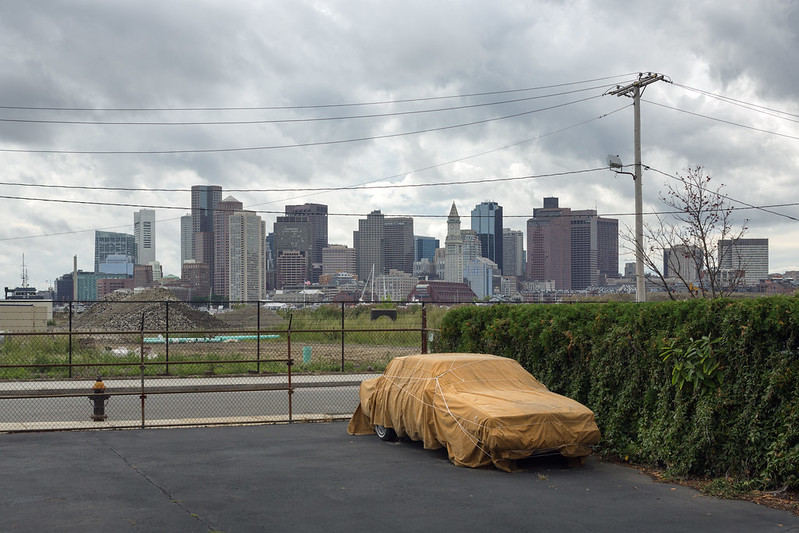
Buffalo, New York
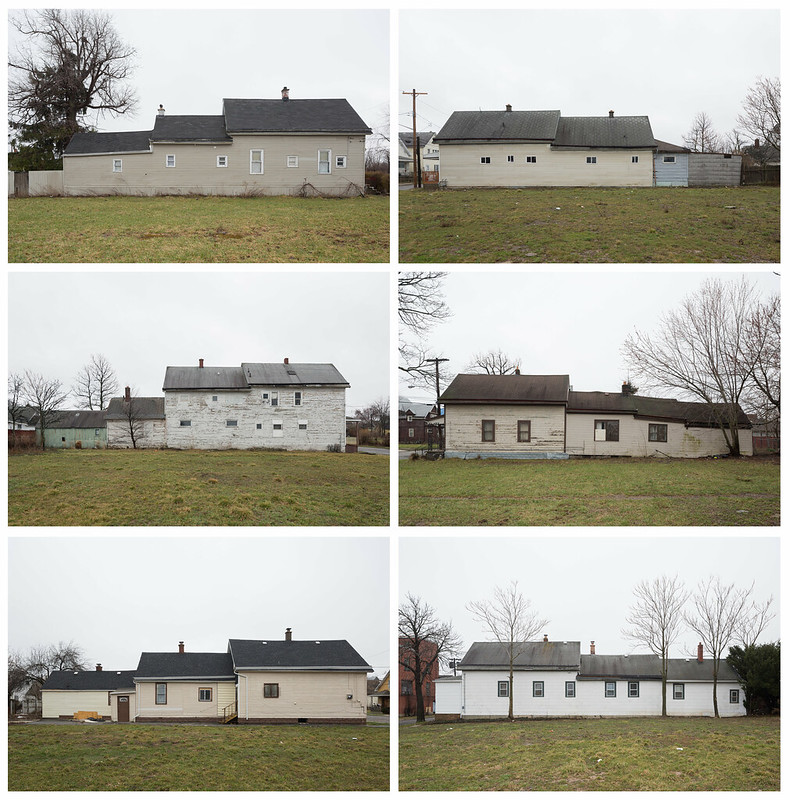
A collection of
telescope houses from Buffalo’s East Side.
Chicago, Illinois [f]
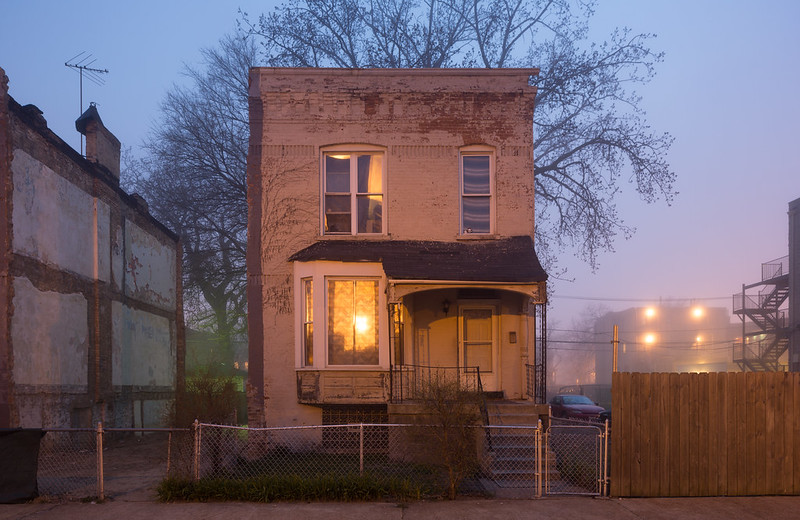
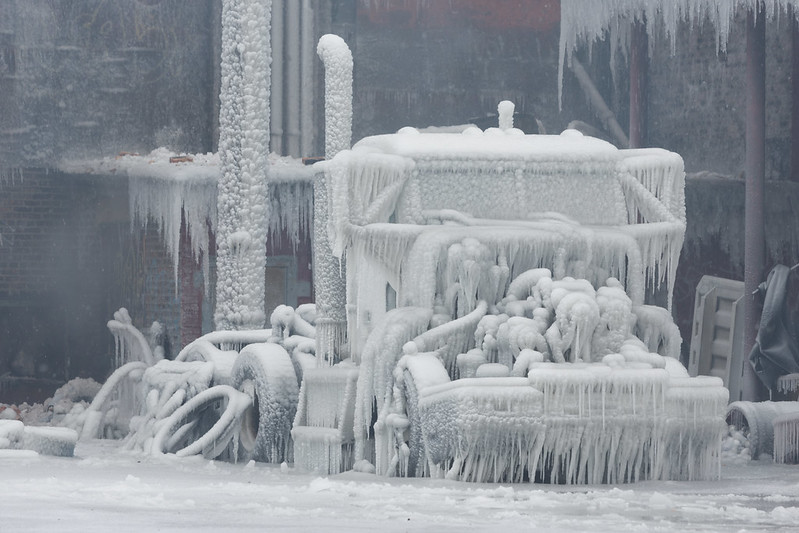
A surprising find in the aftermath of
a massive warehouse fire on Chicago’s South Side.
Cleveland, Ohio [f]

Post-war suburban development in Cleveland-adjacent Euclid, Ohio.
Detroit, Michigan
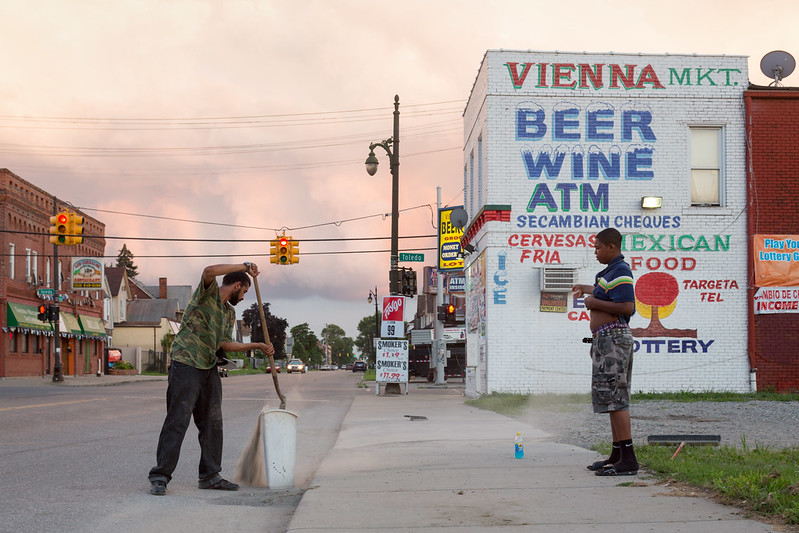
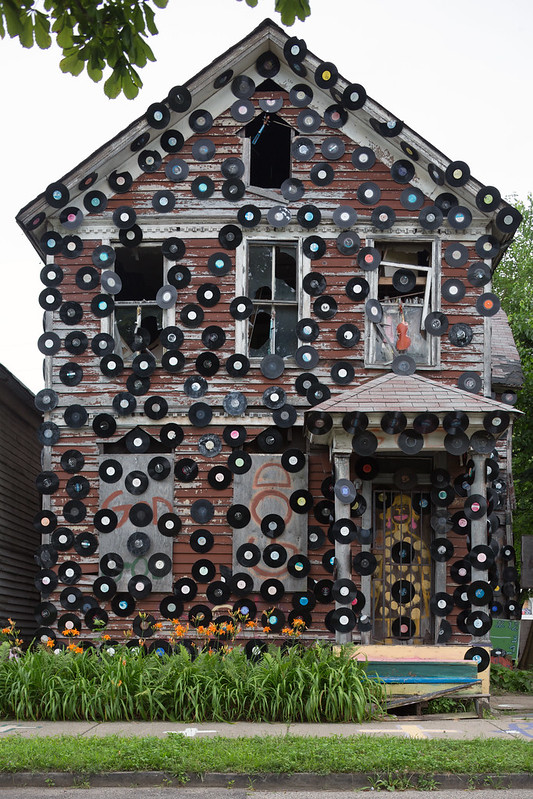
The House of Soul was one of several Heidelberg Project buildings burned by an arsonist in 2013.
New York City, New York [f]

Scaling fish on the sidewalk in the Bronx.
San Diego, California [f]


